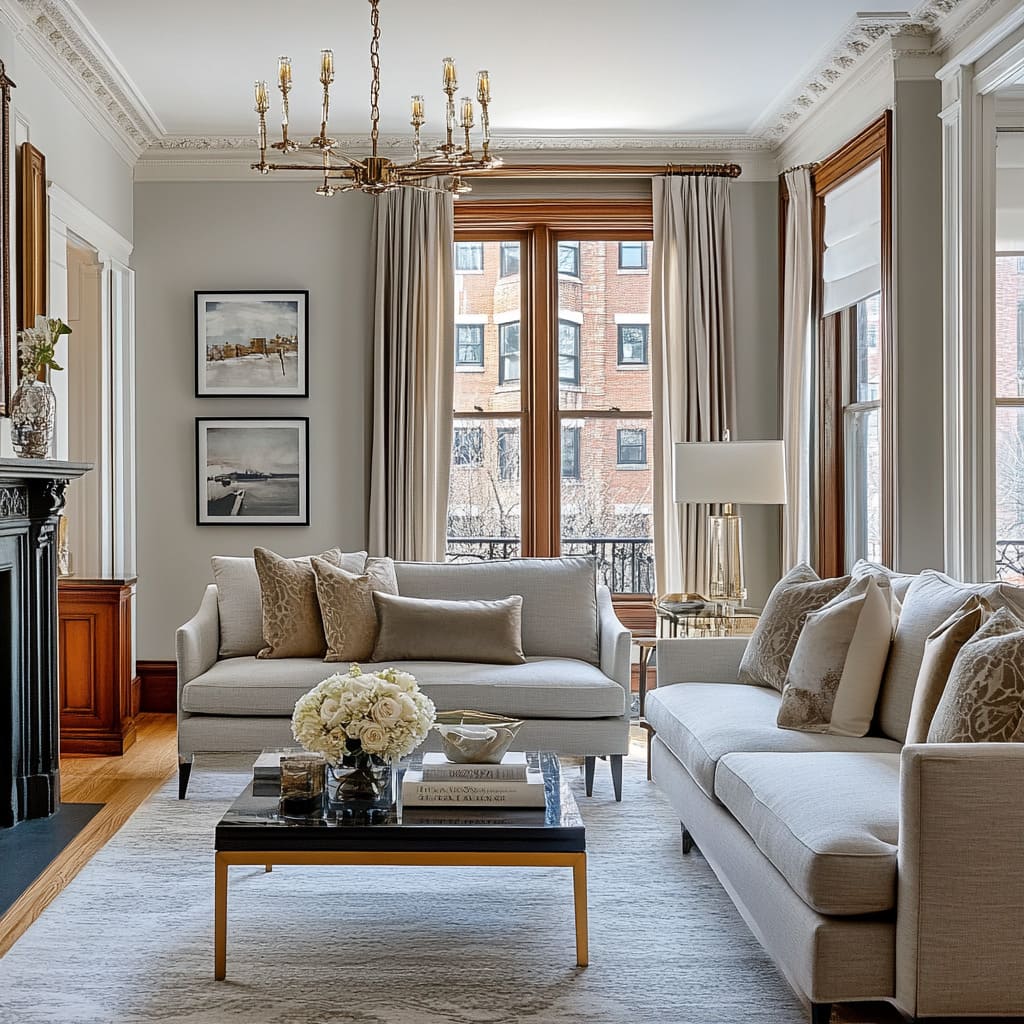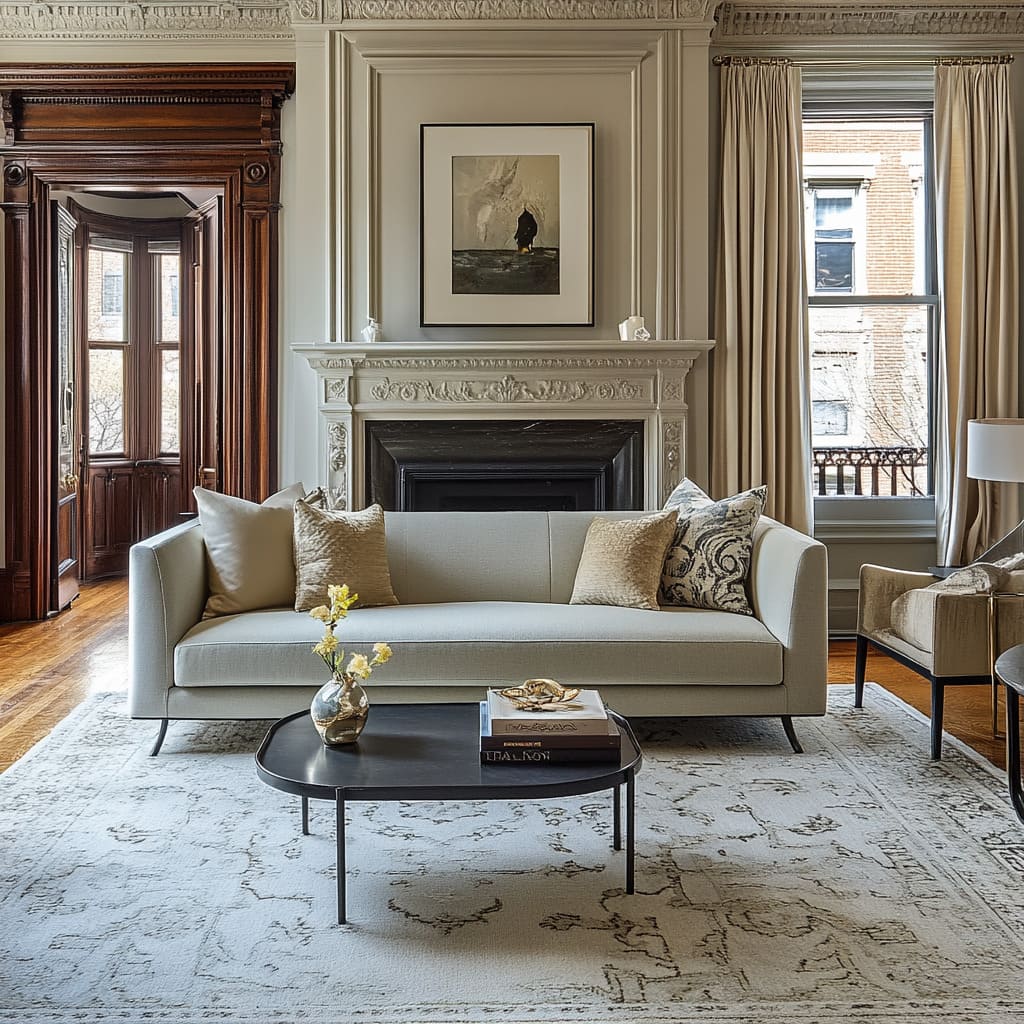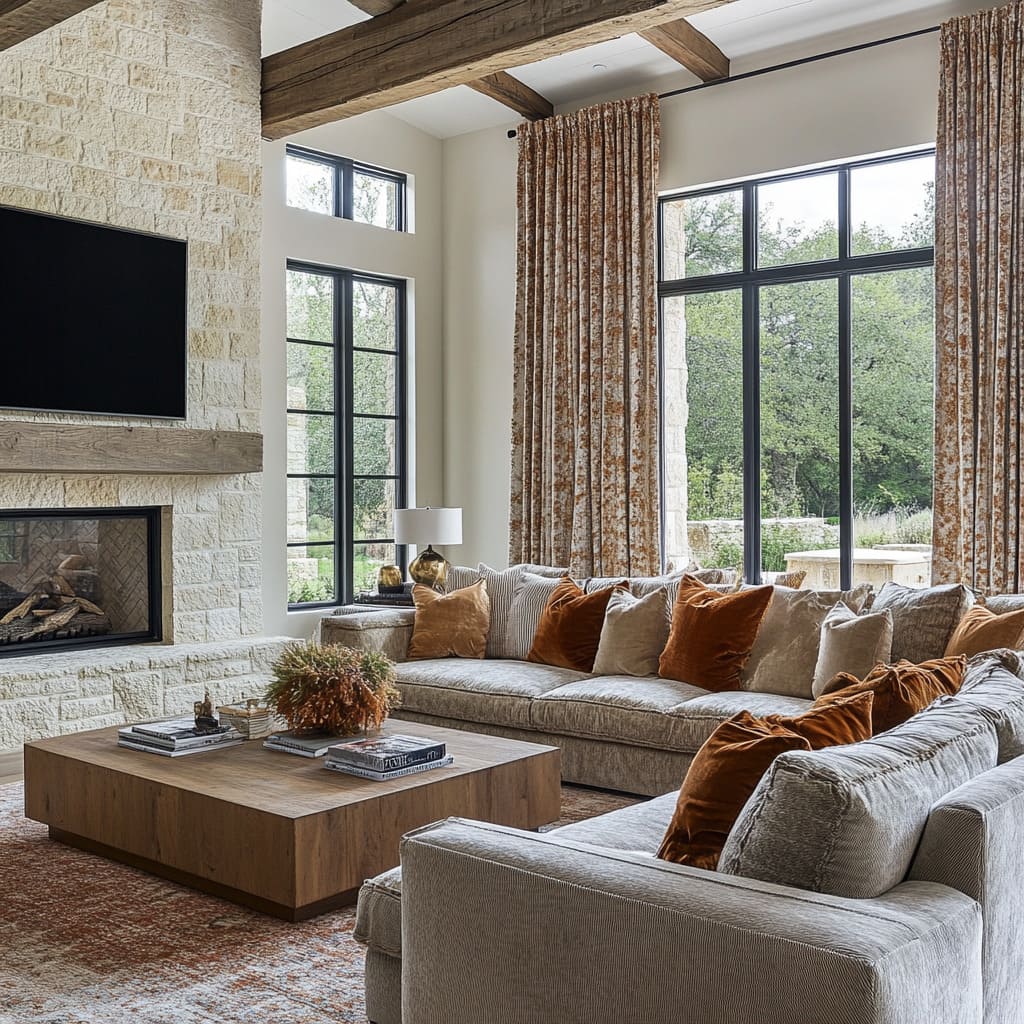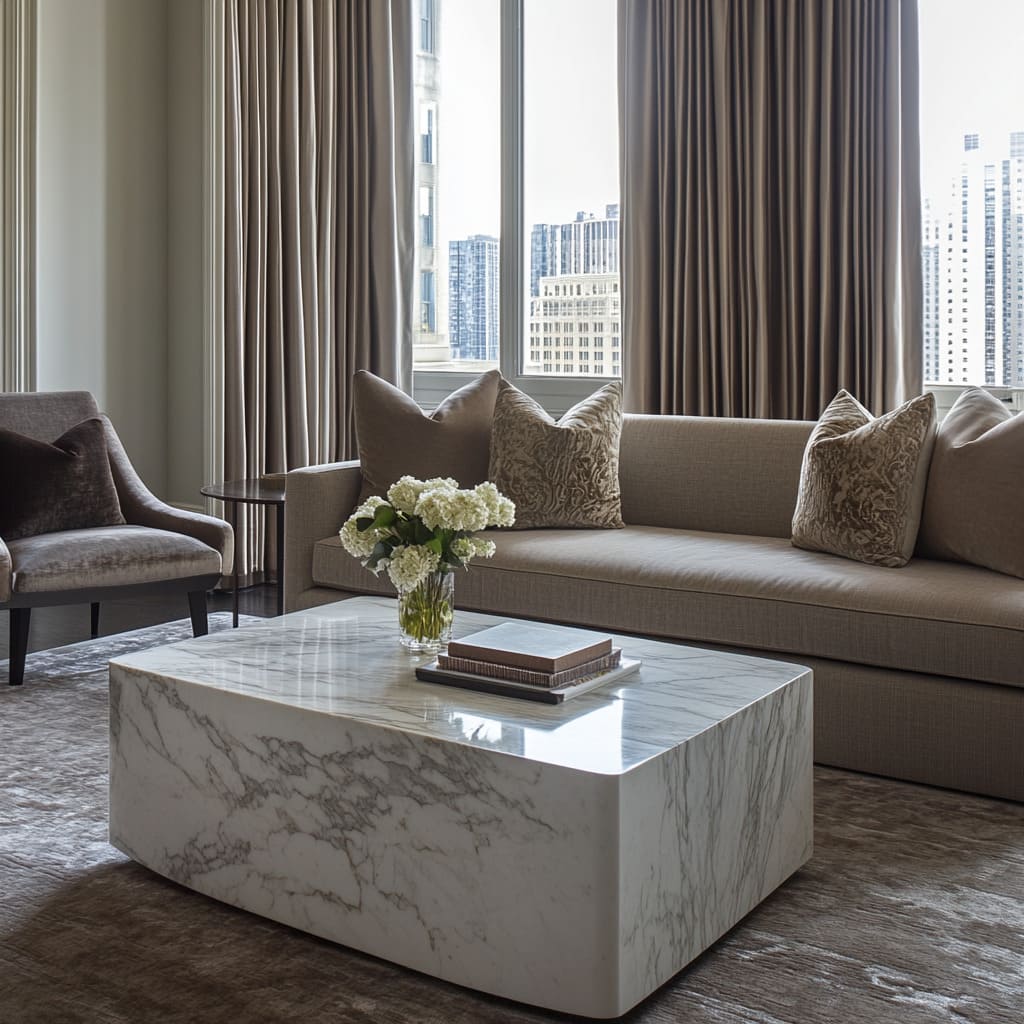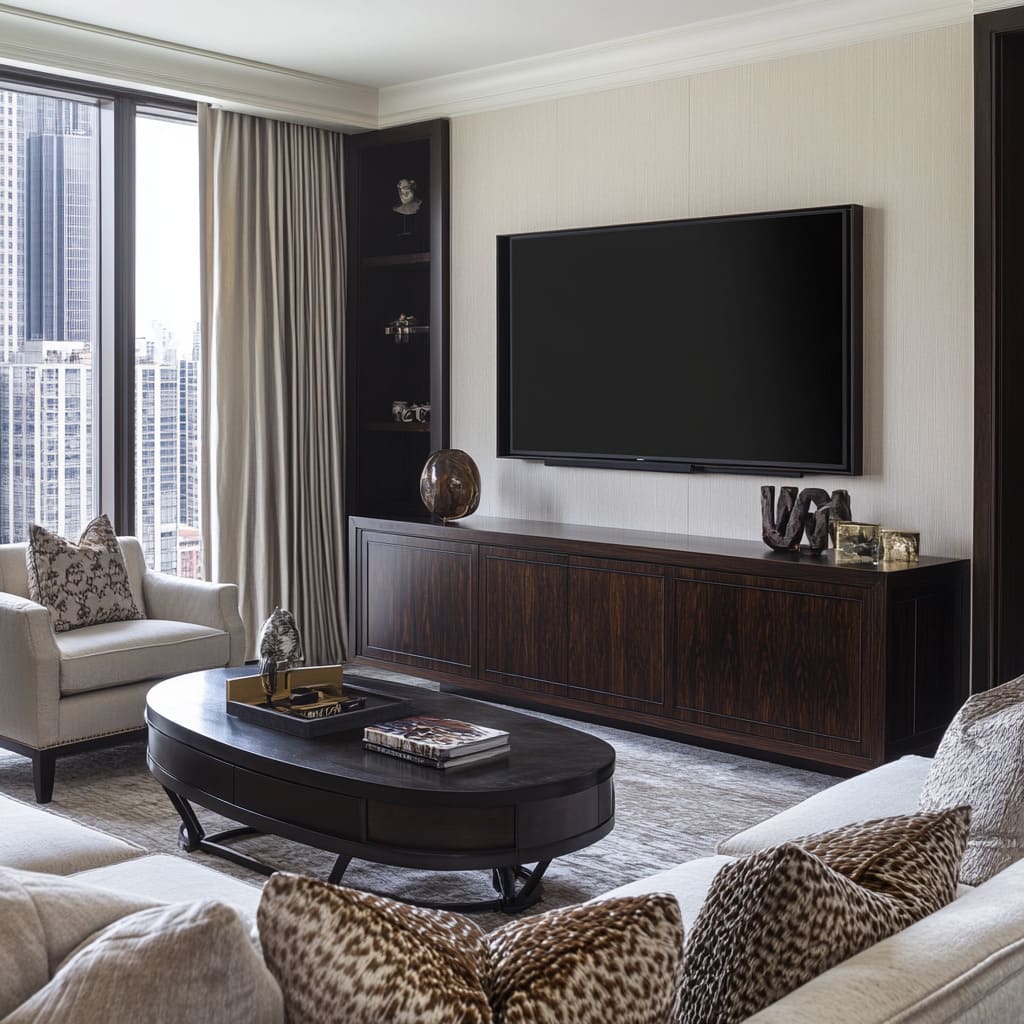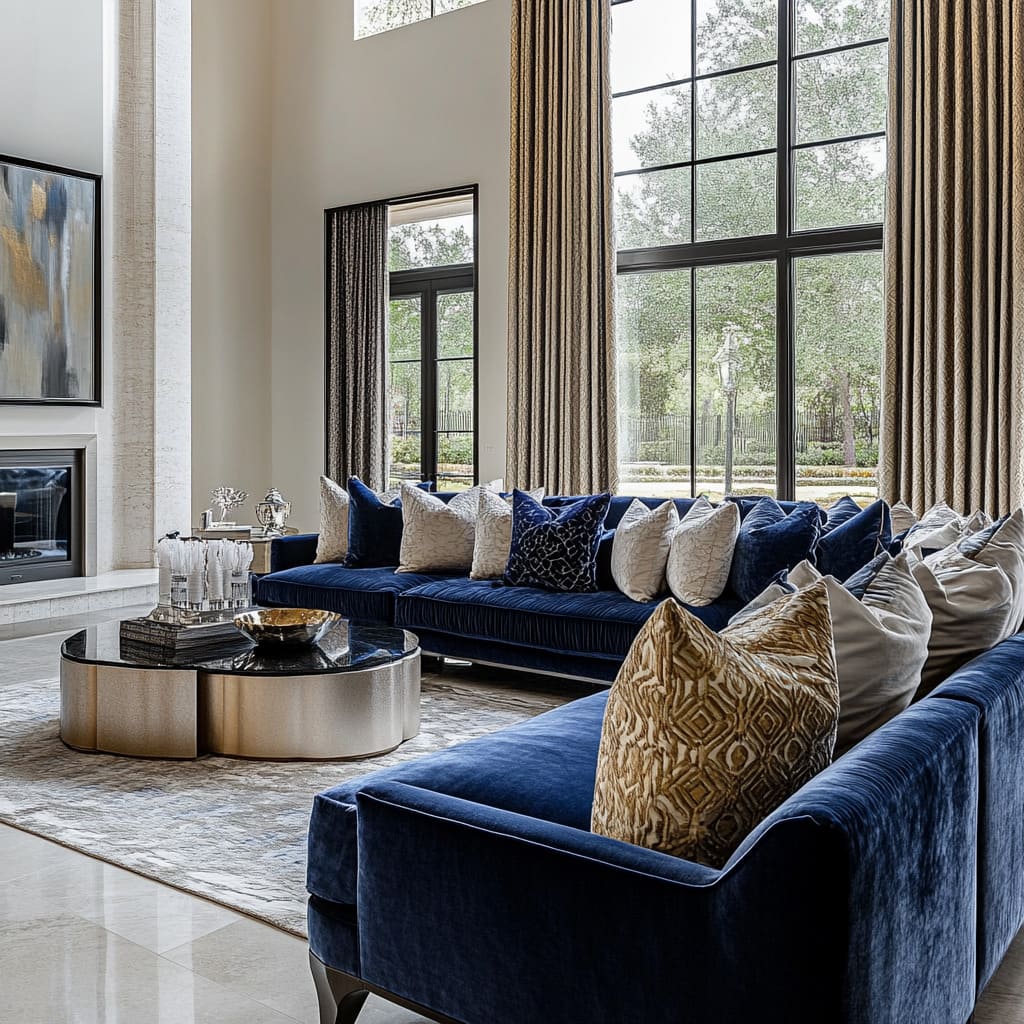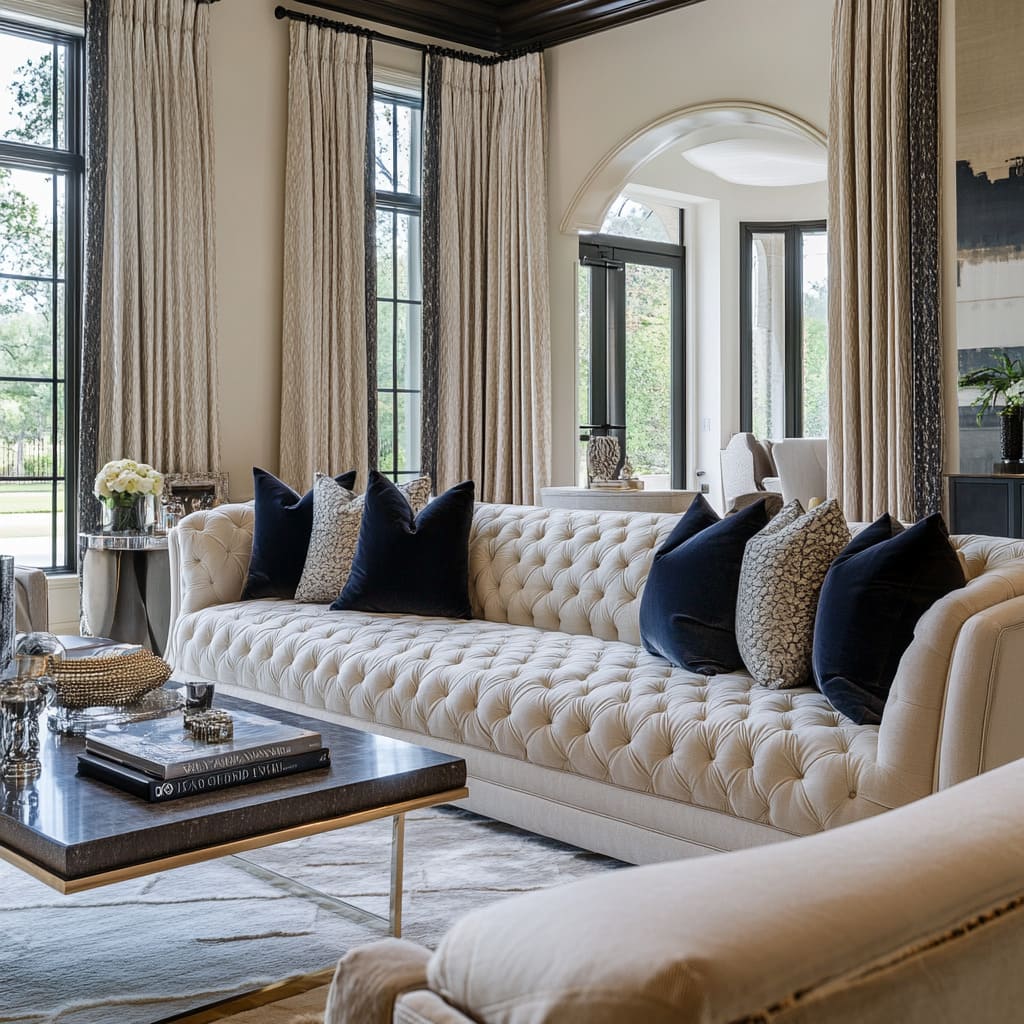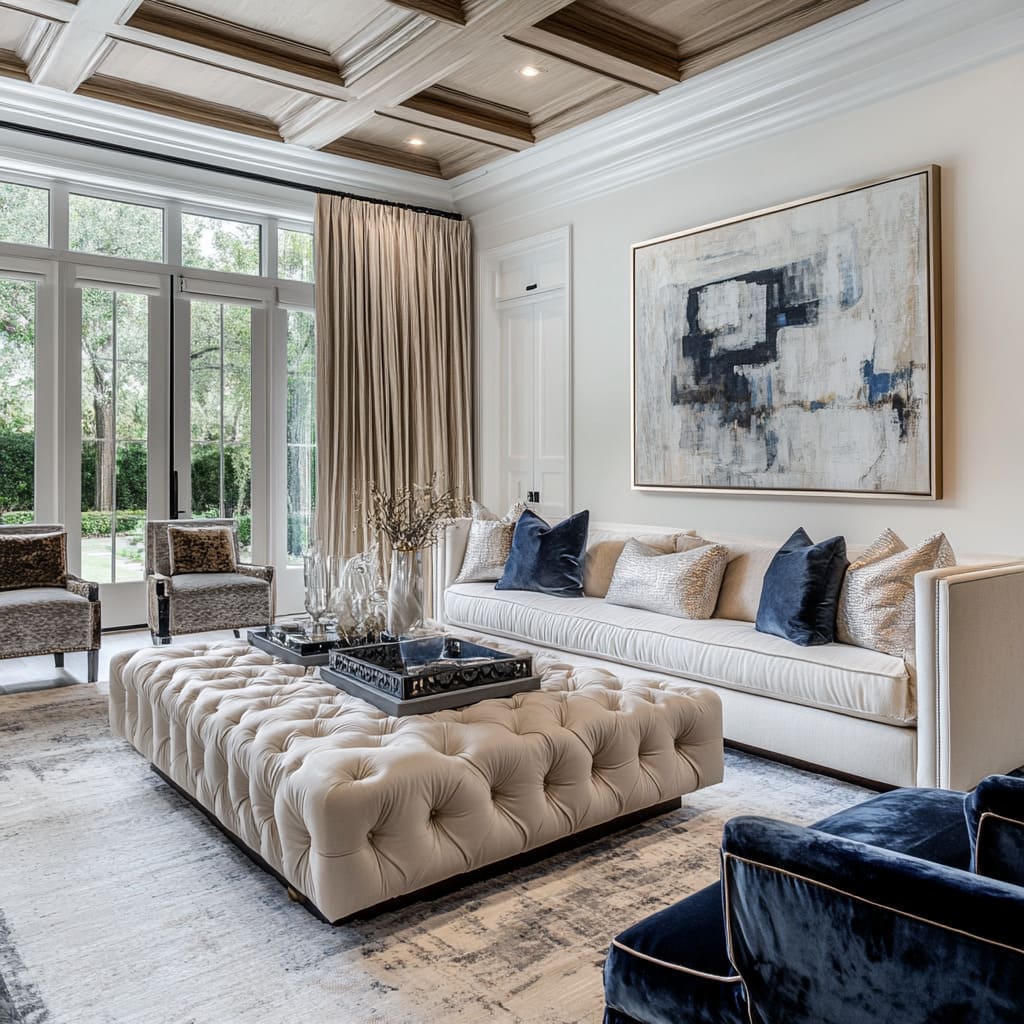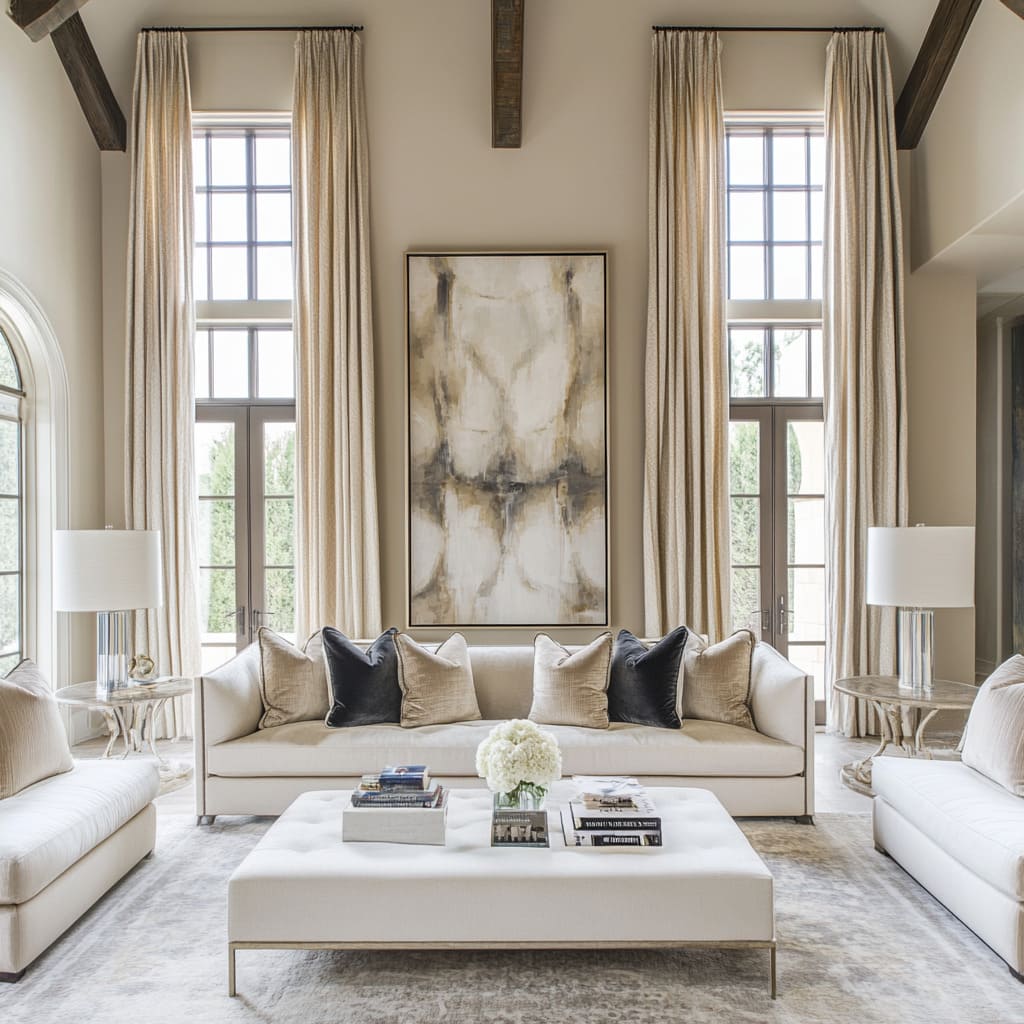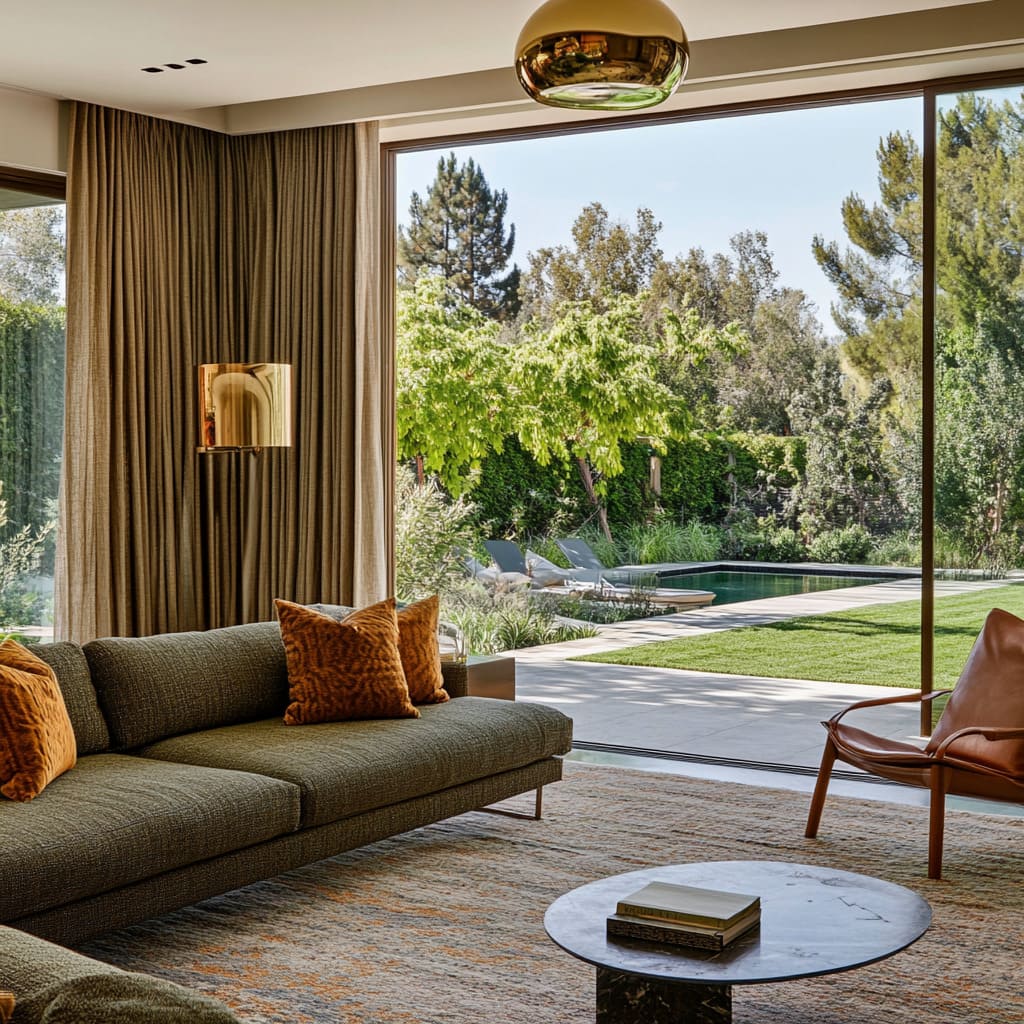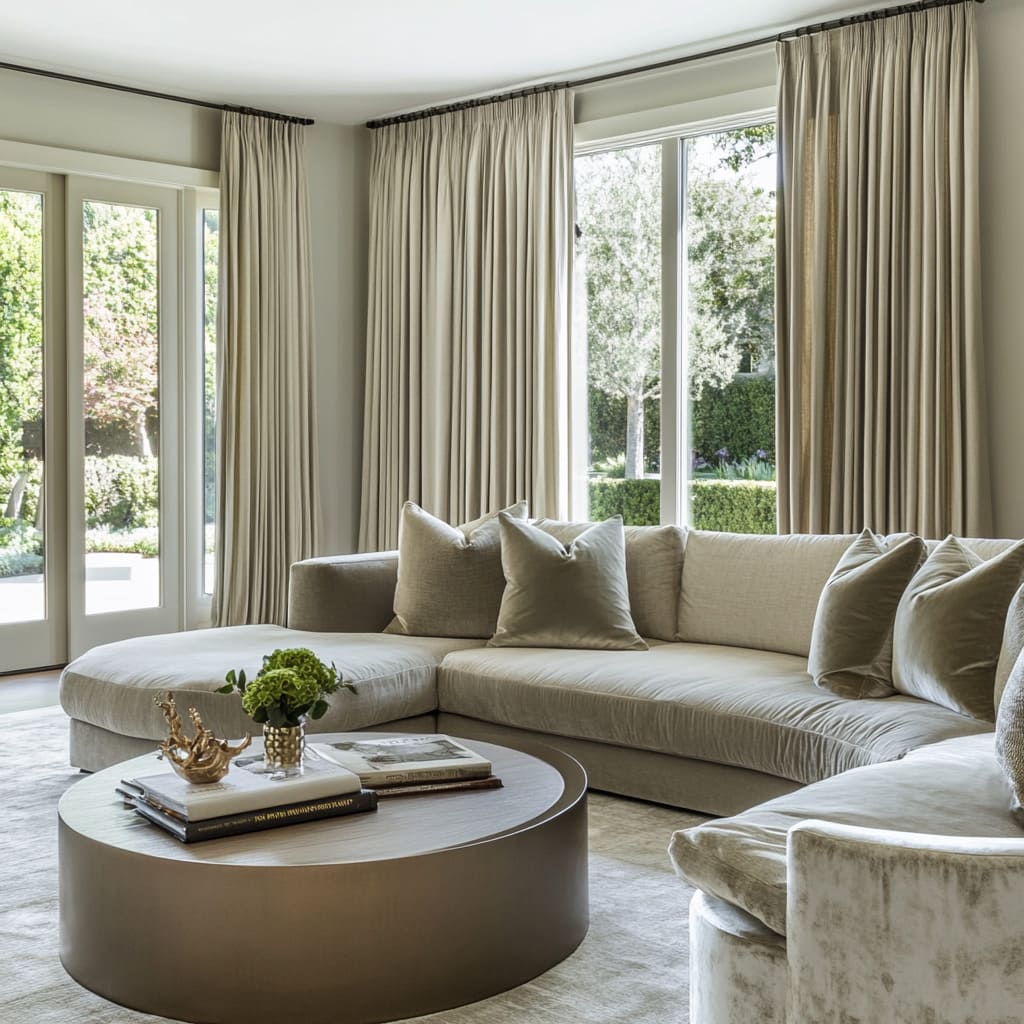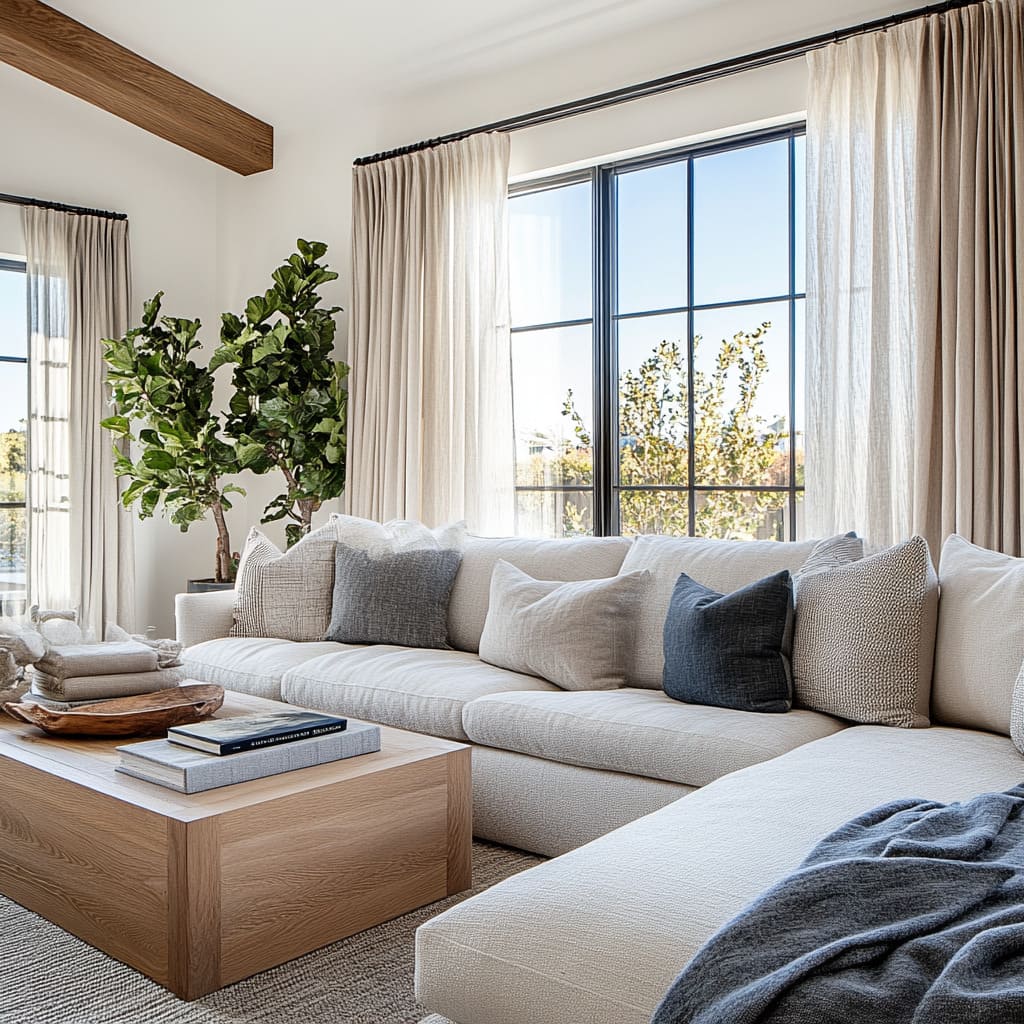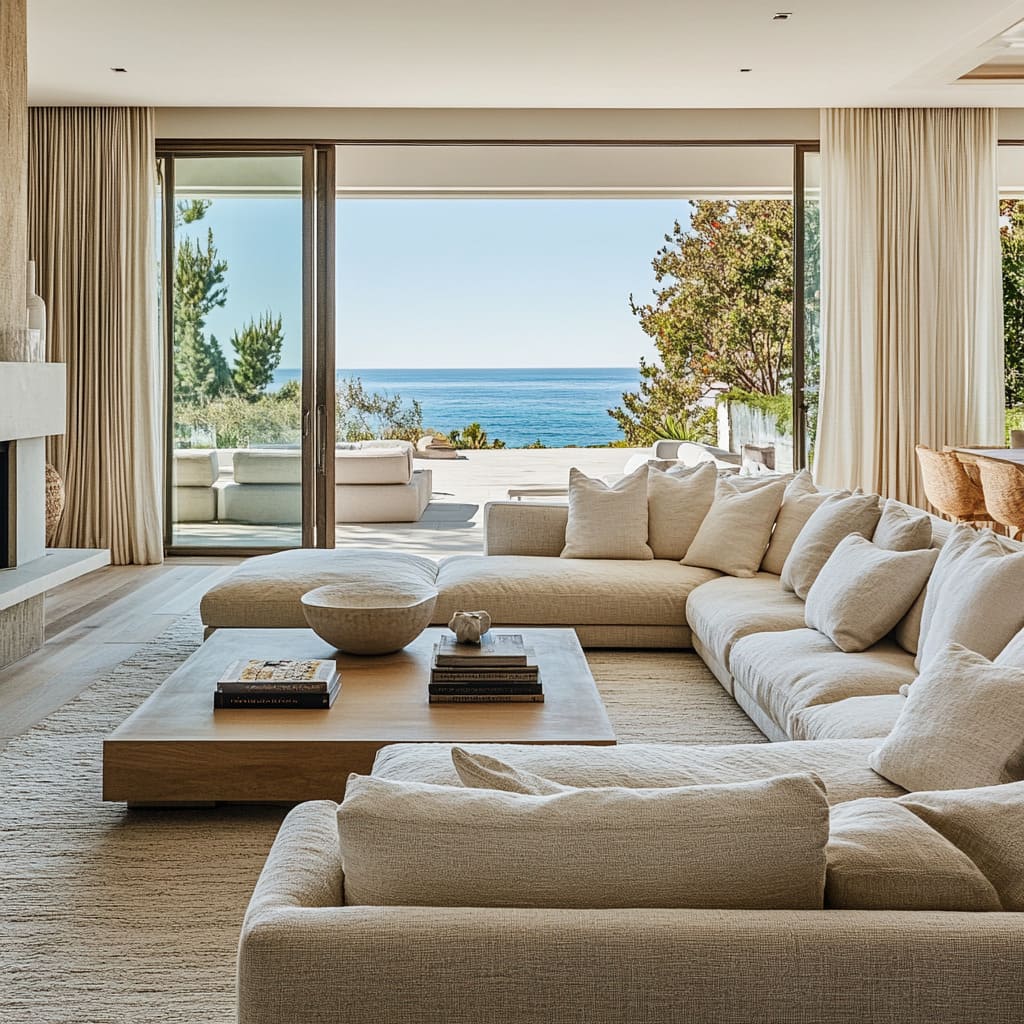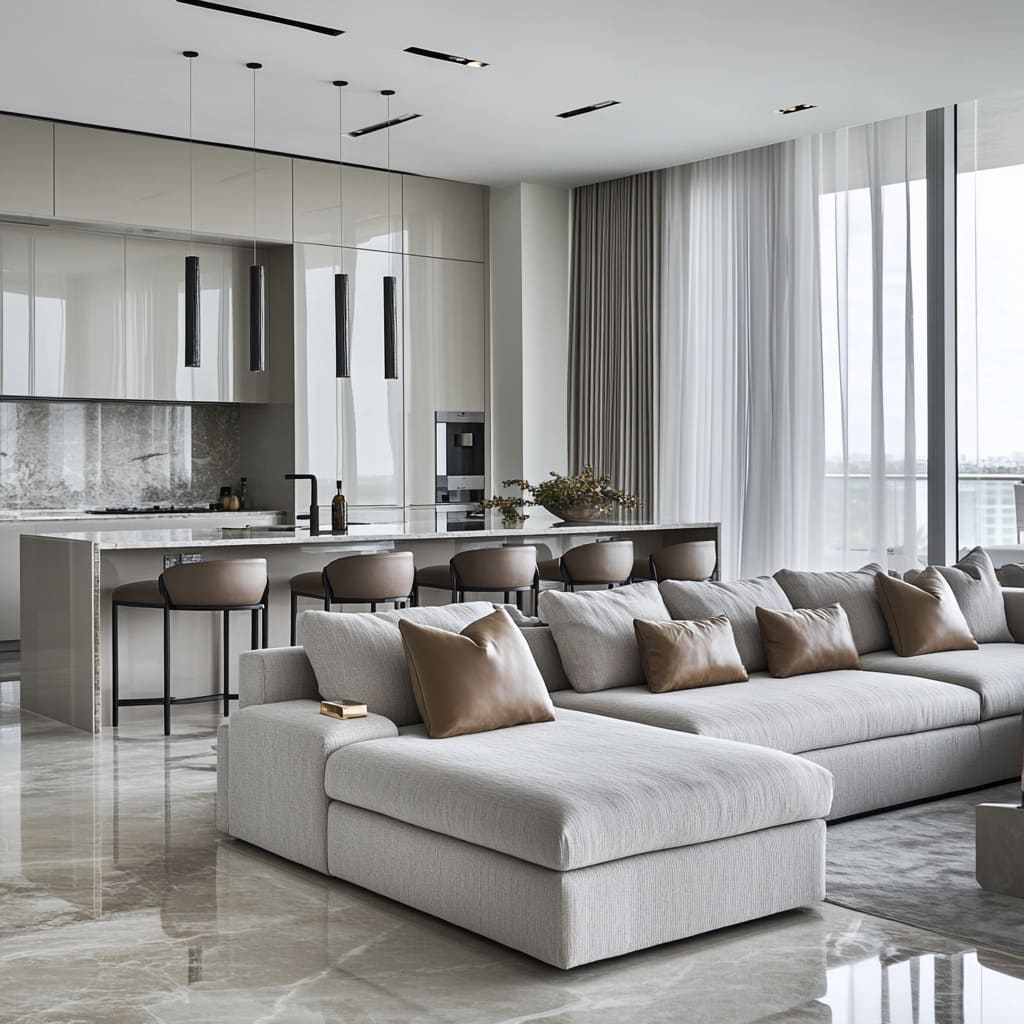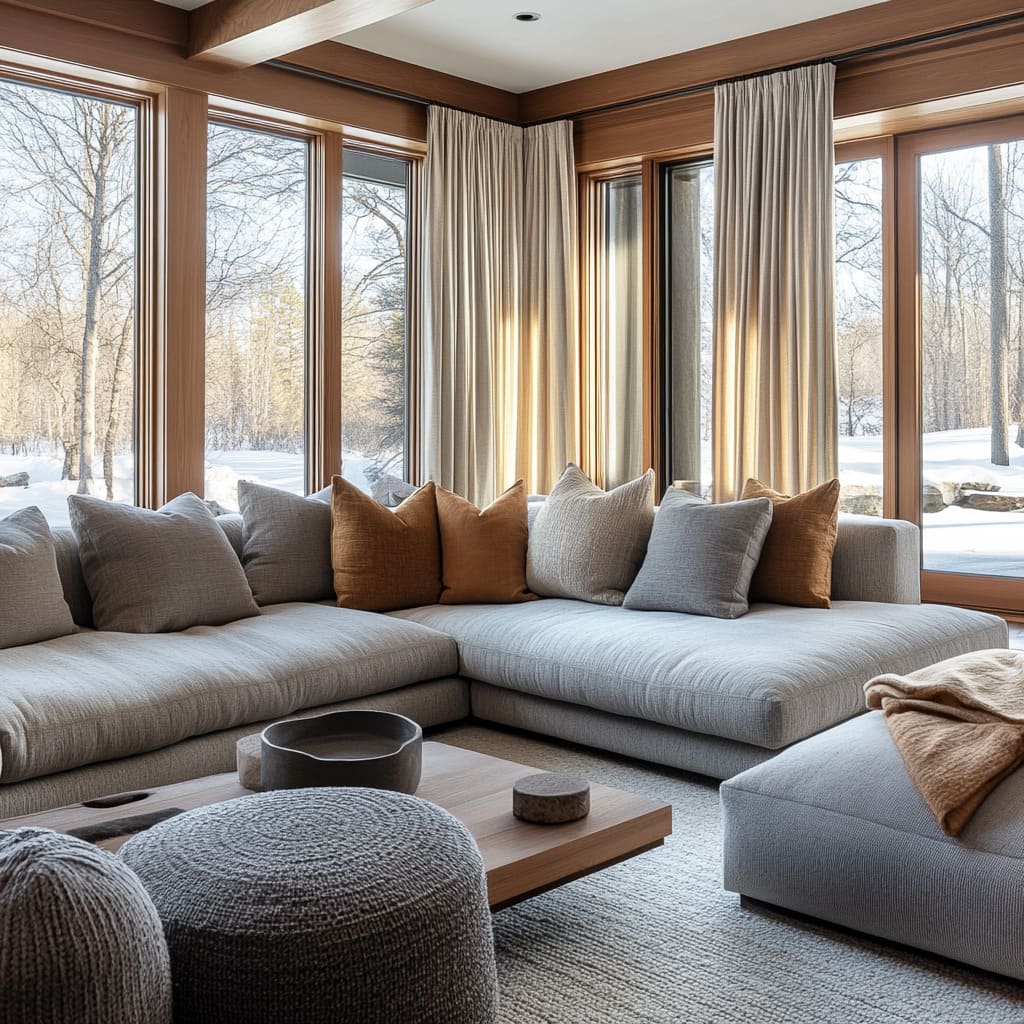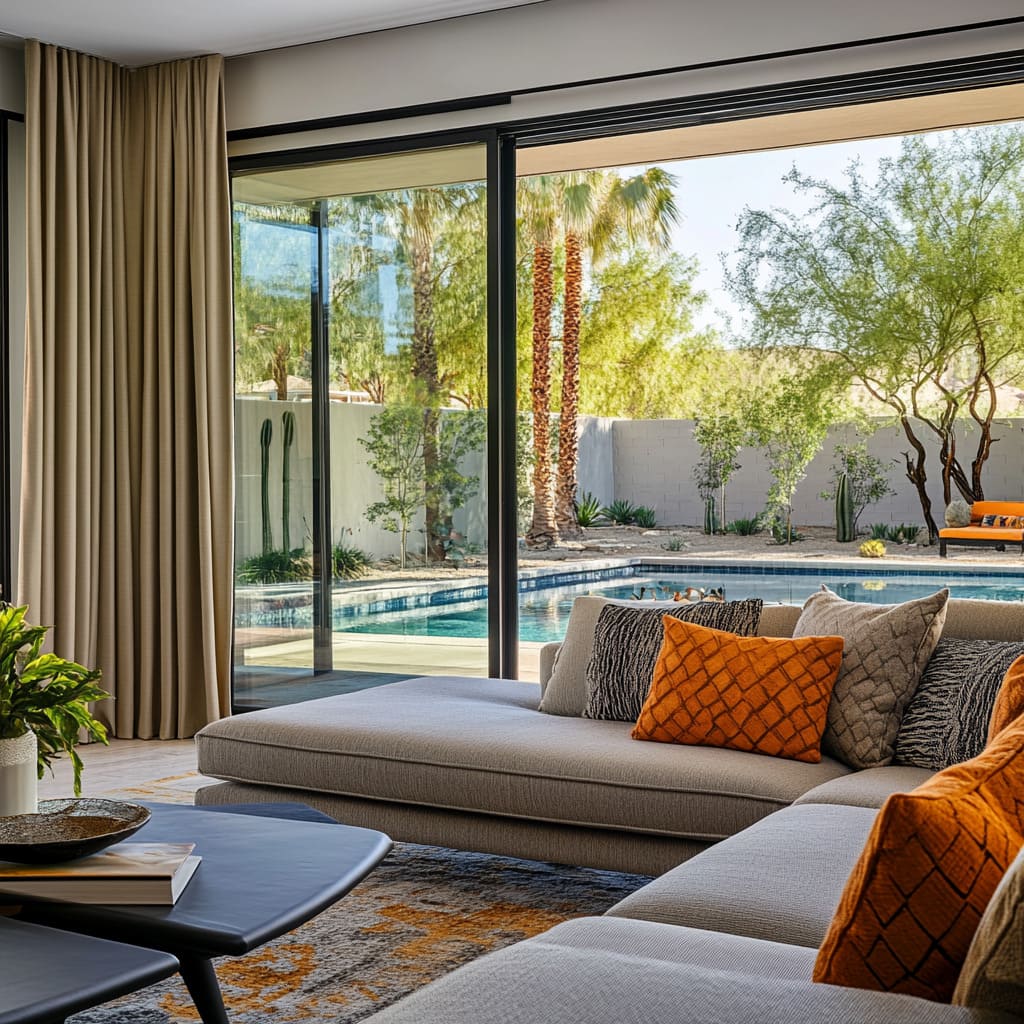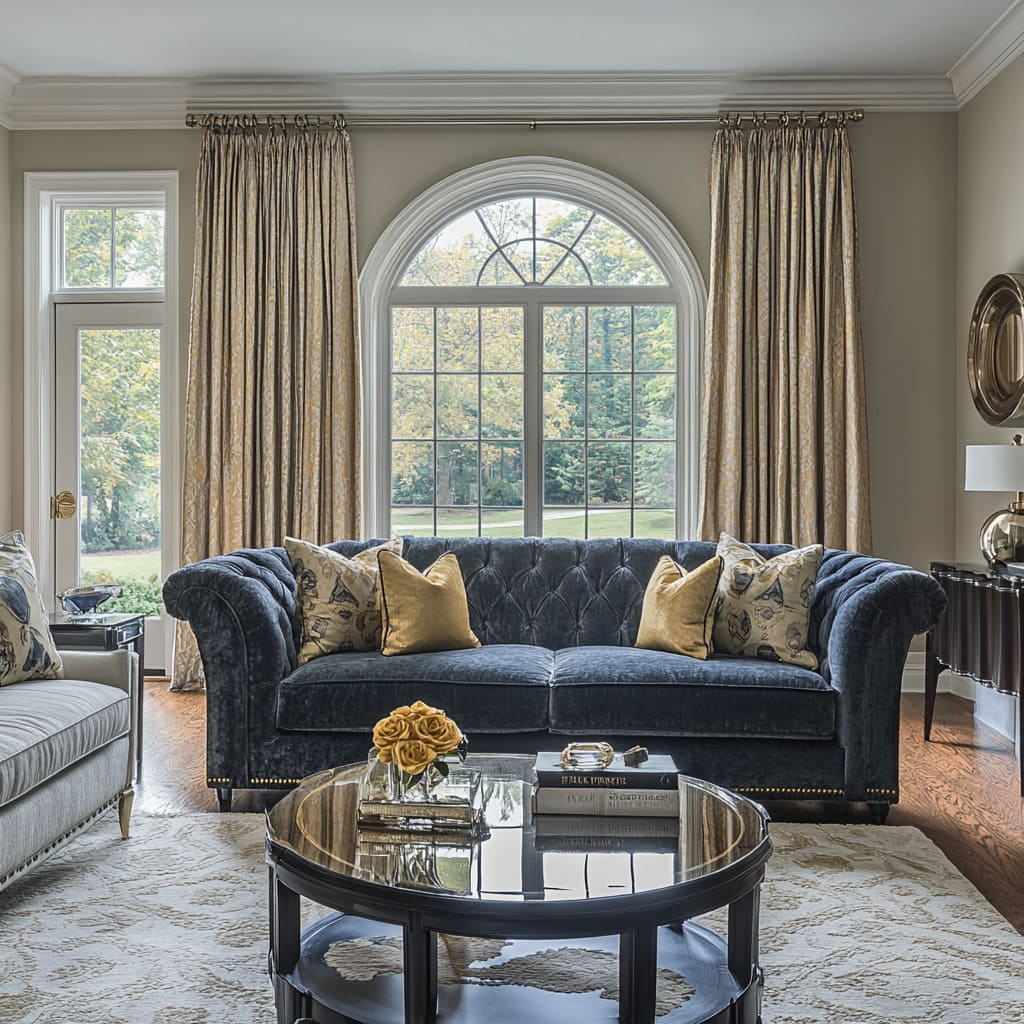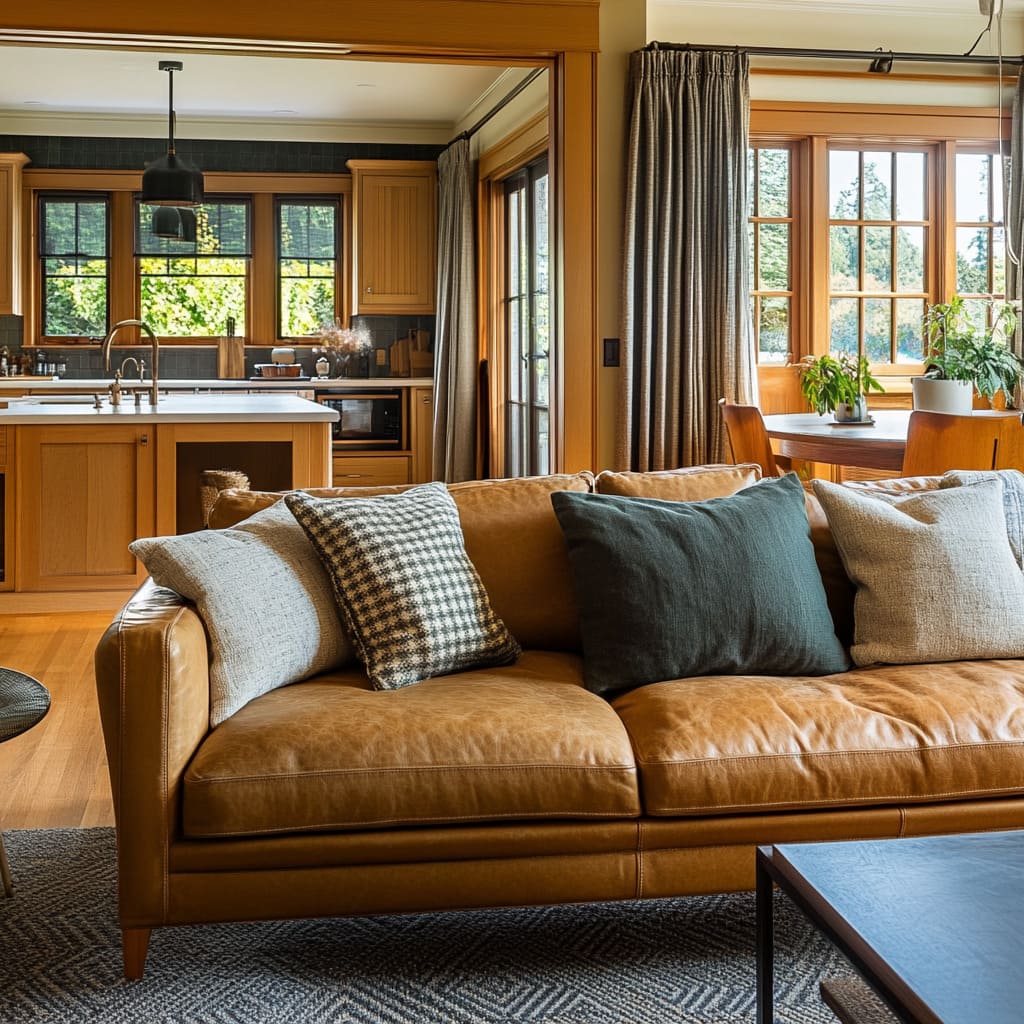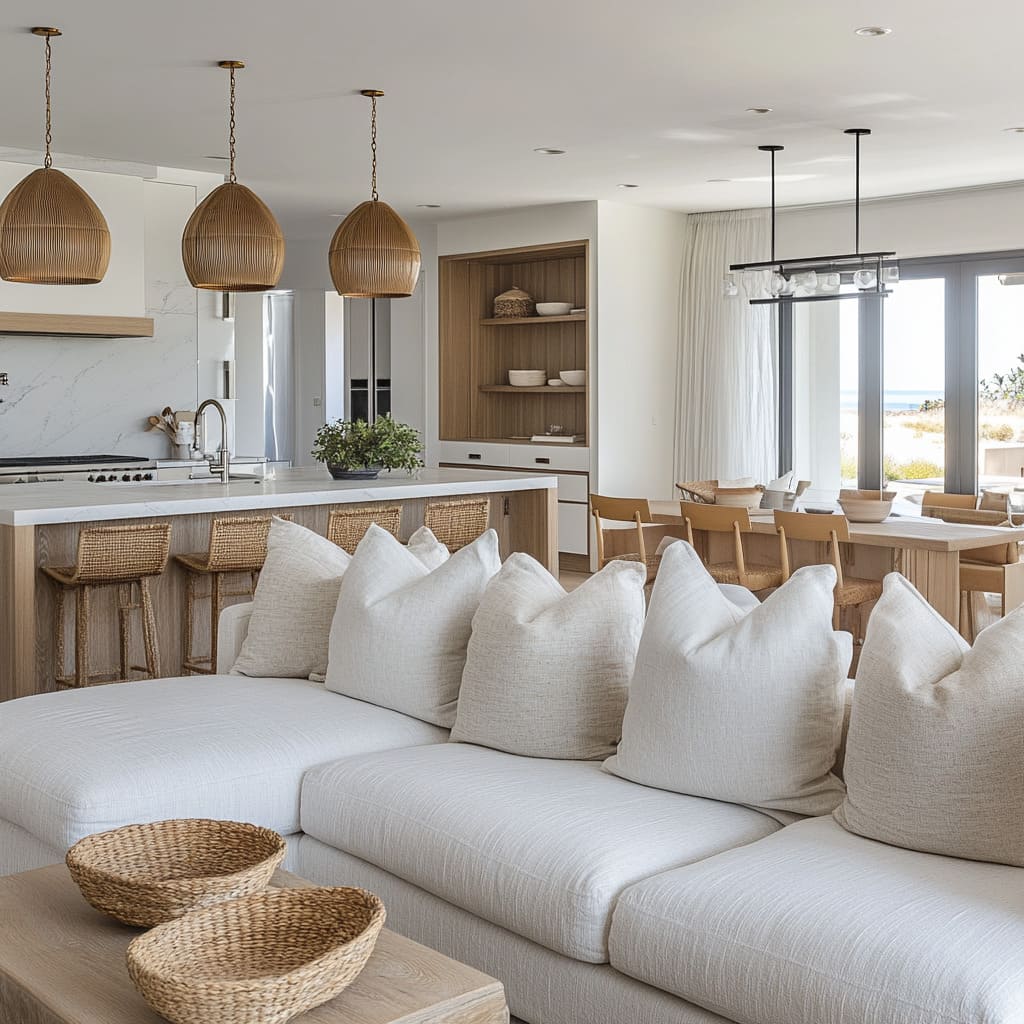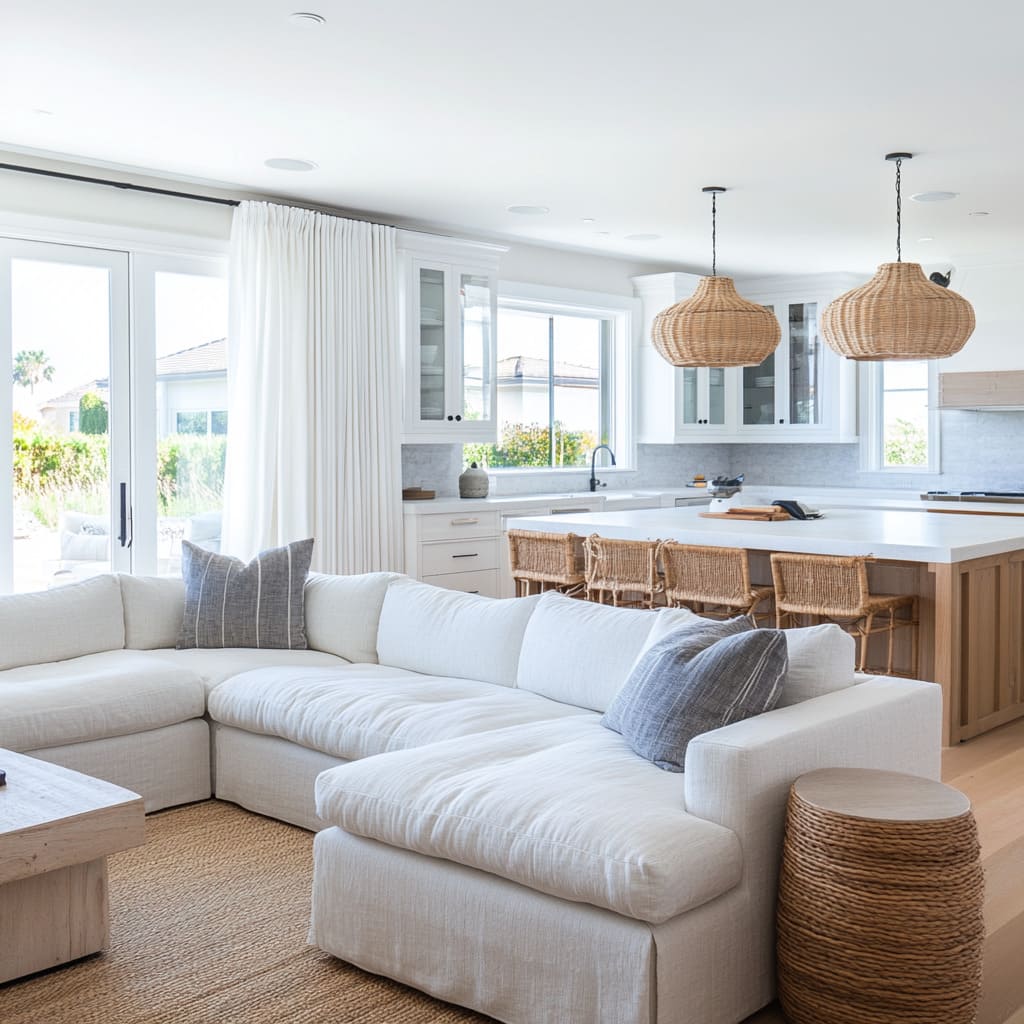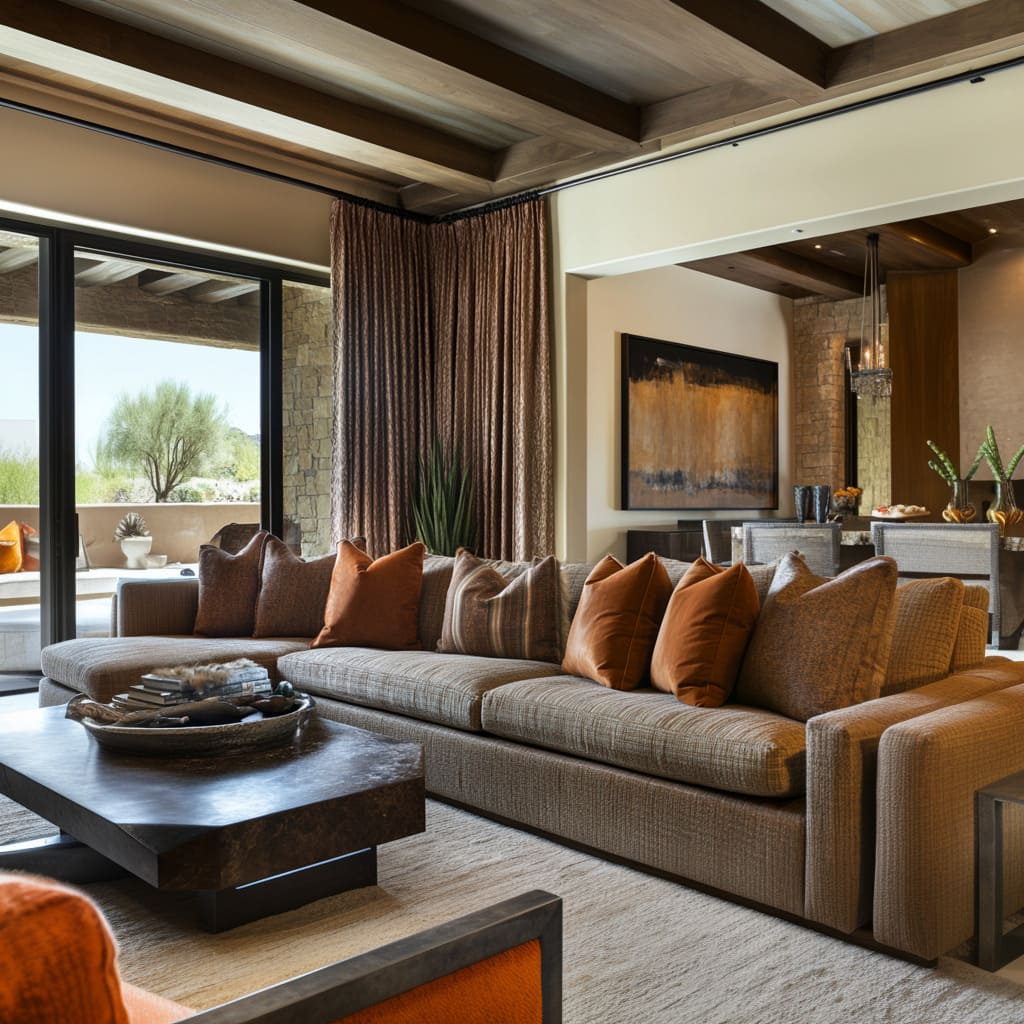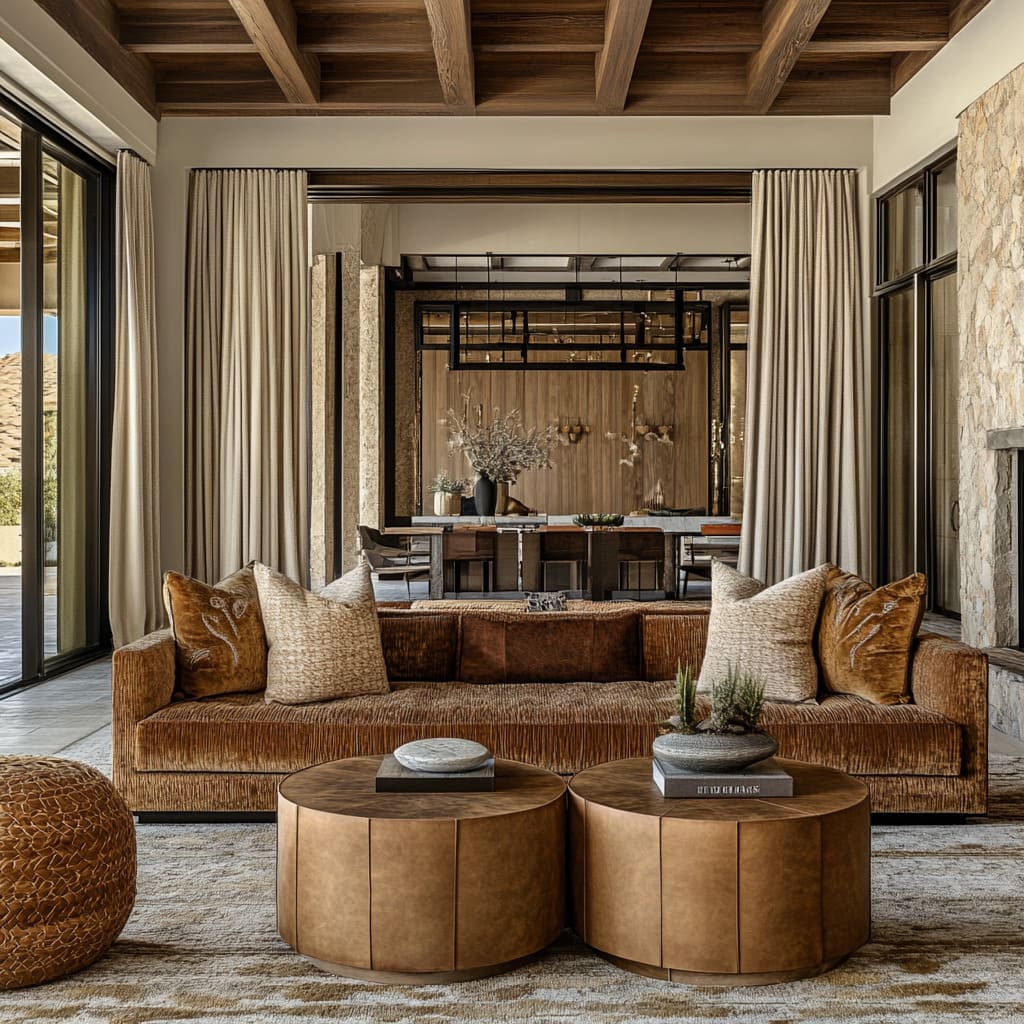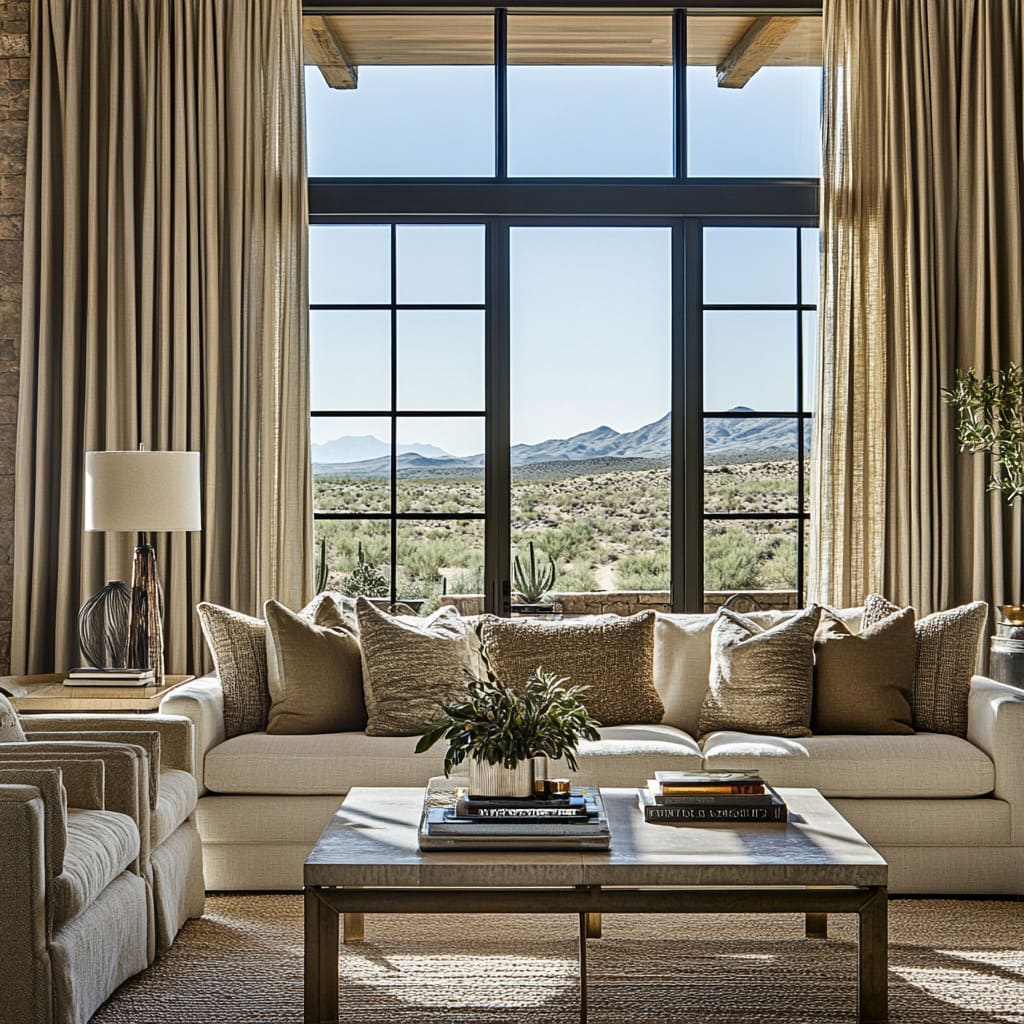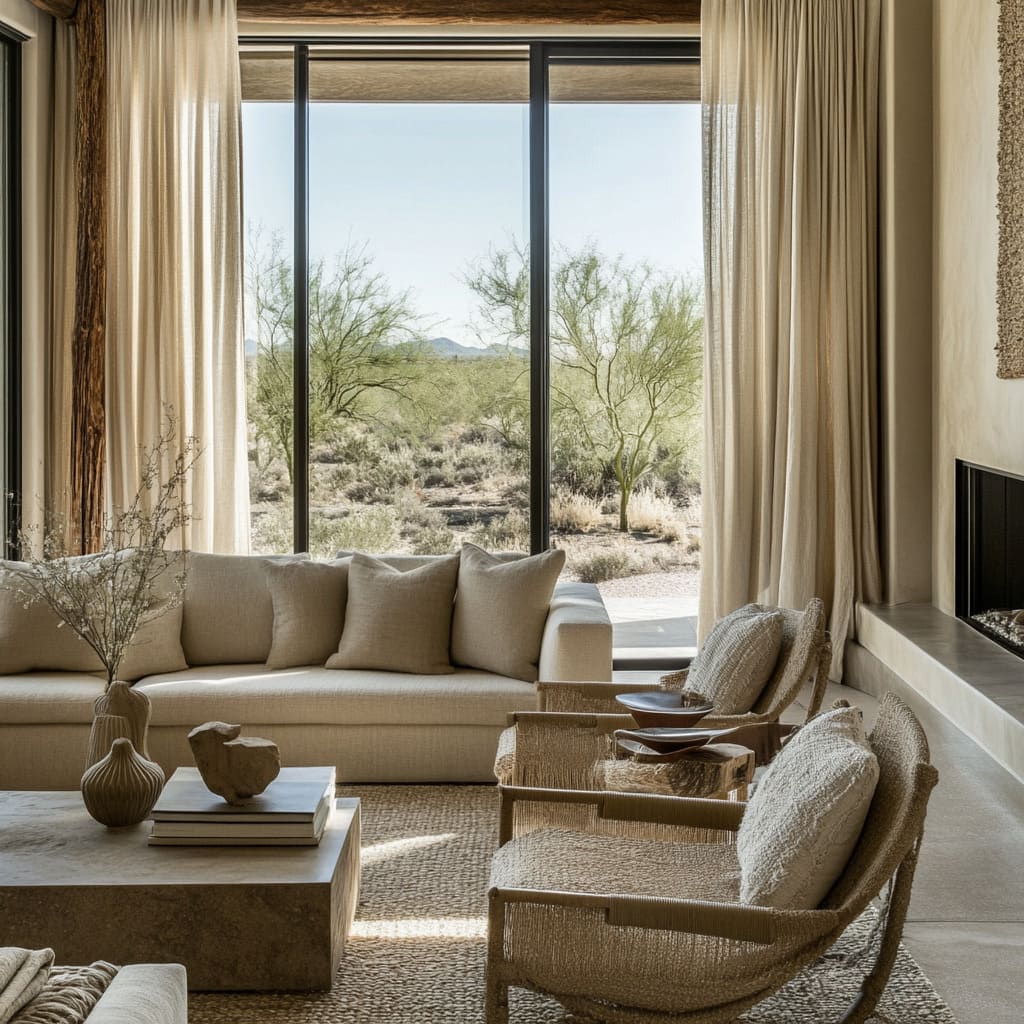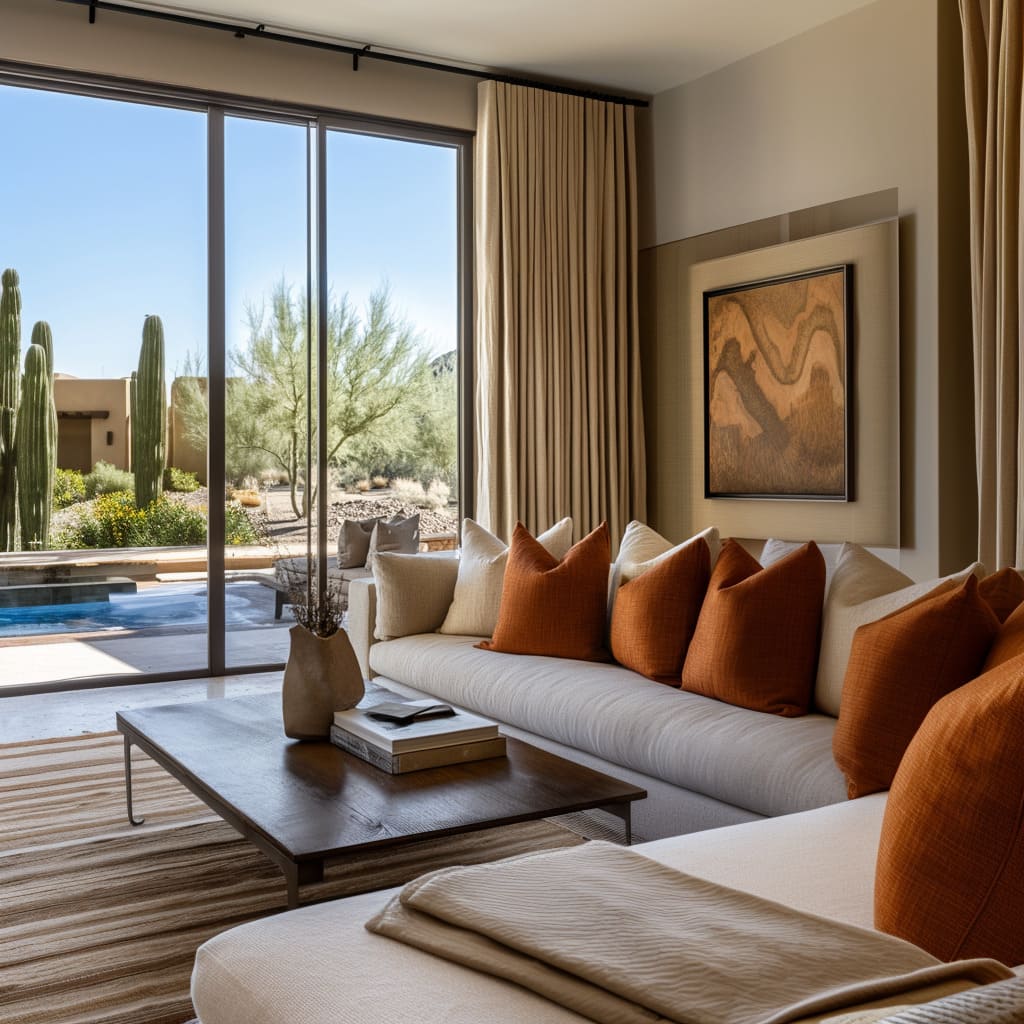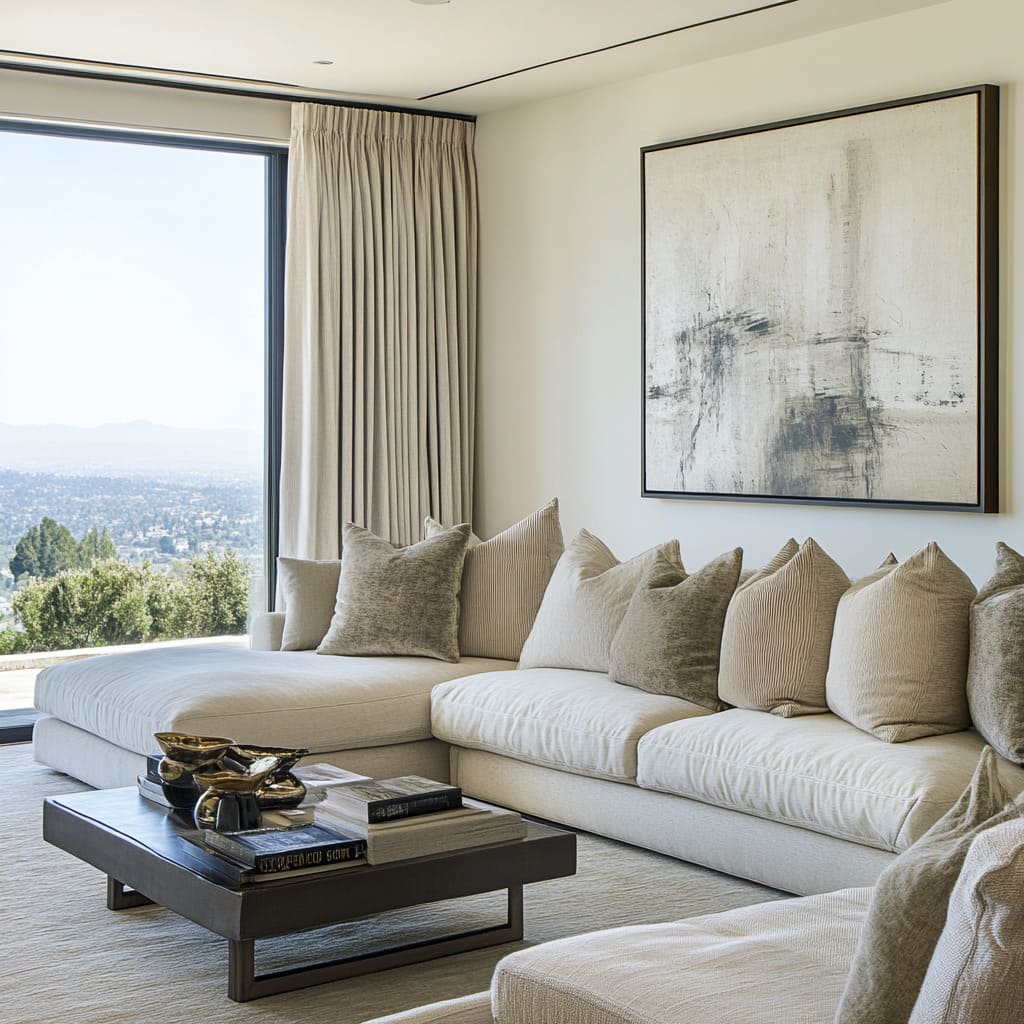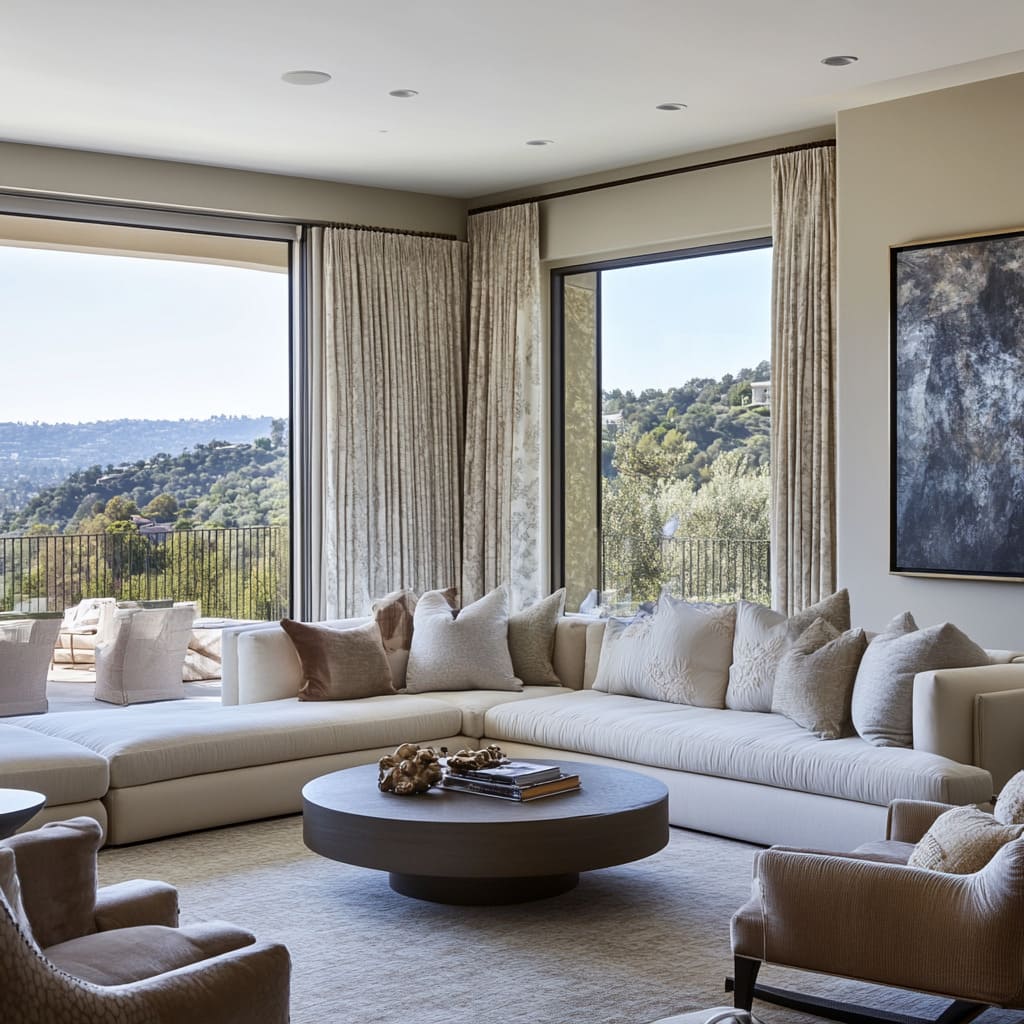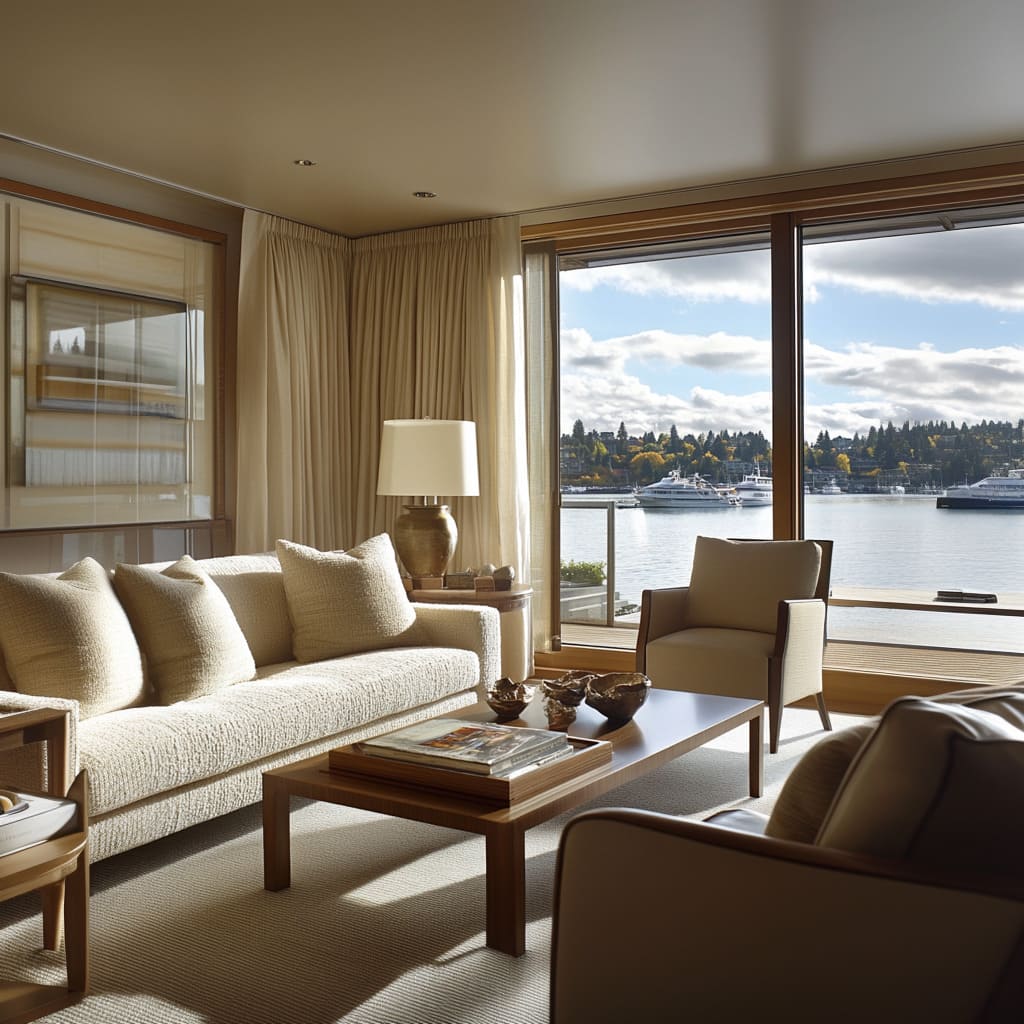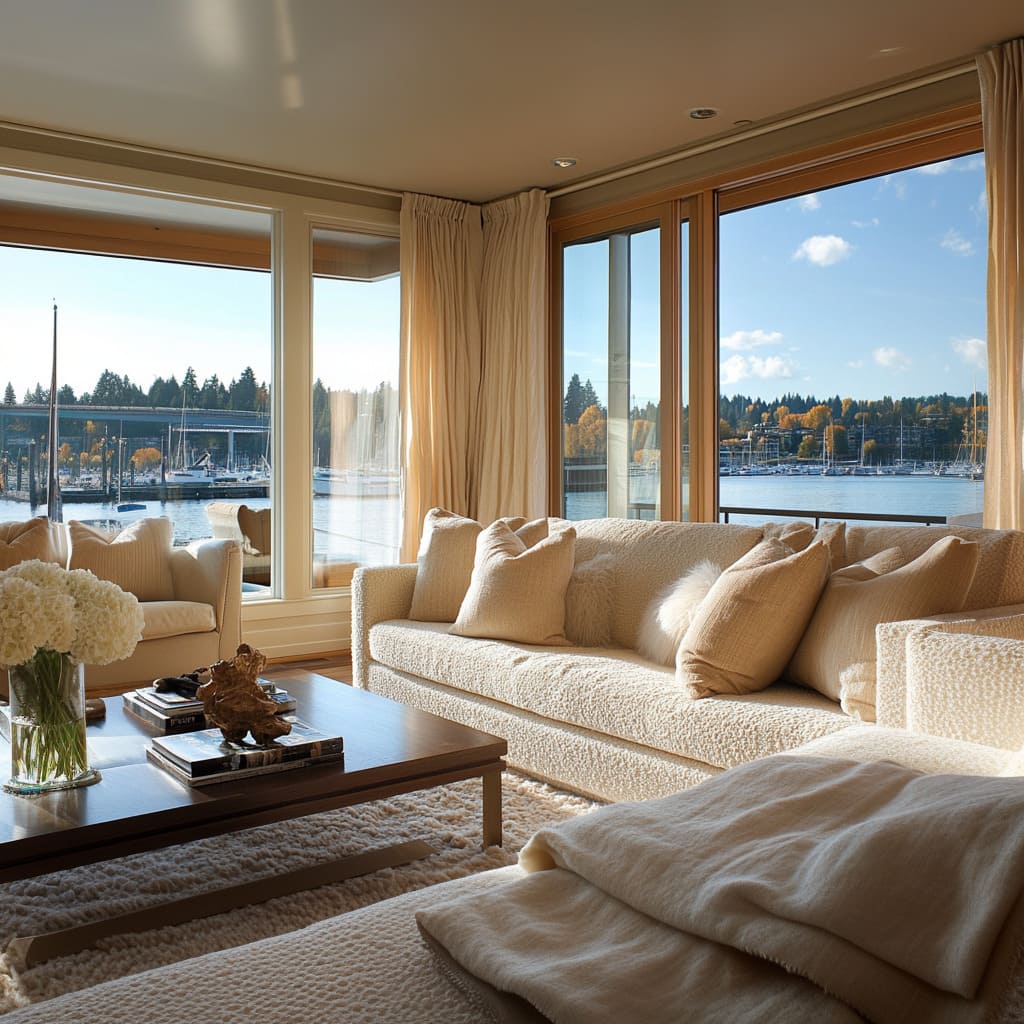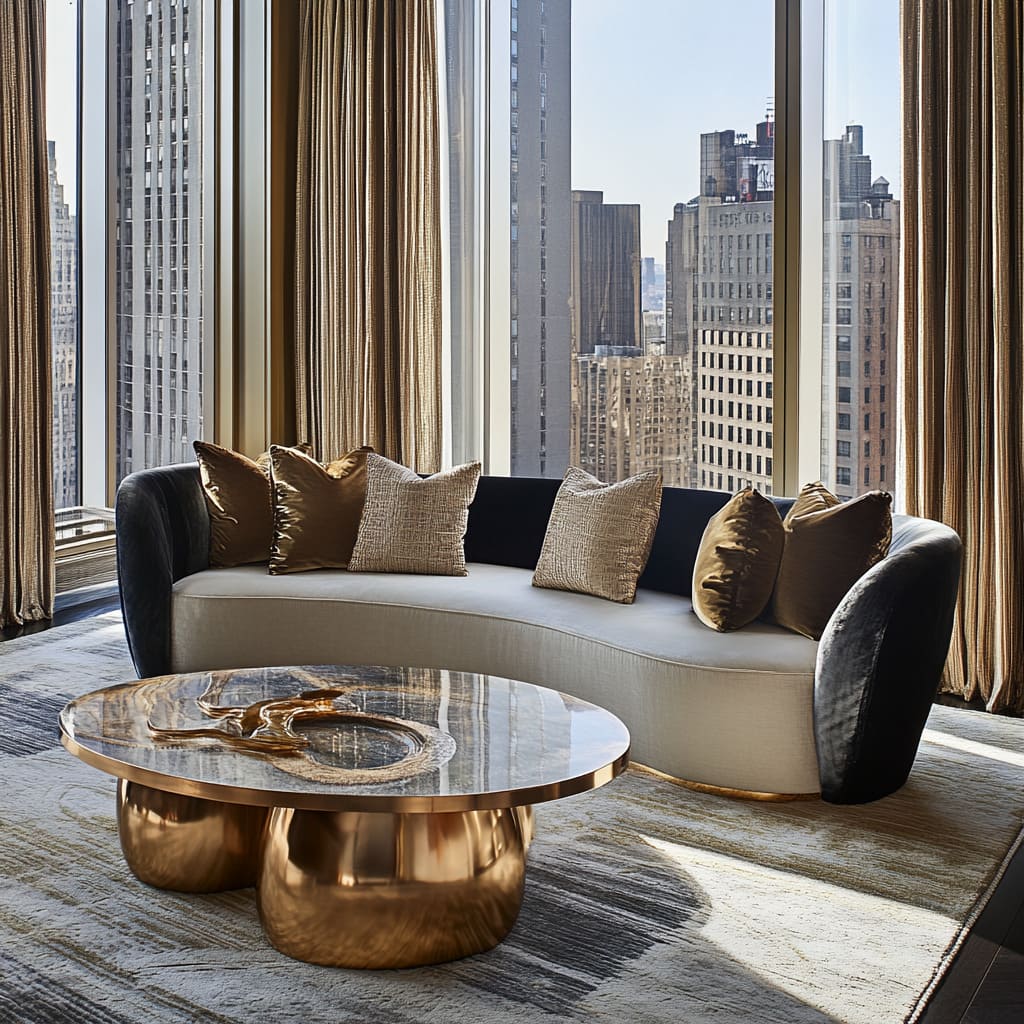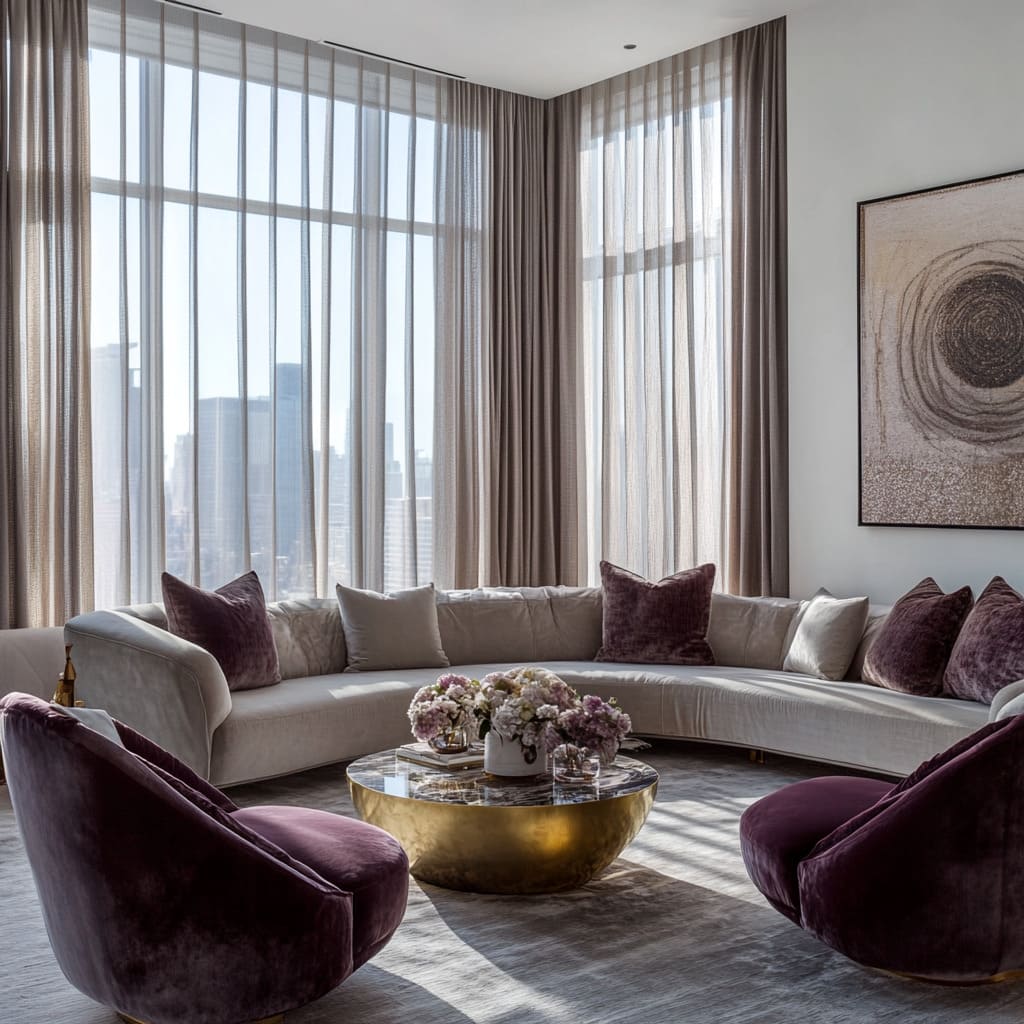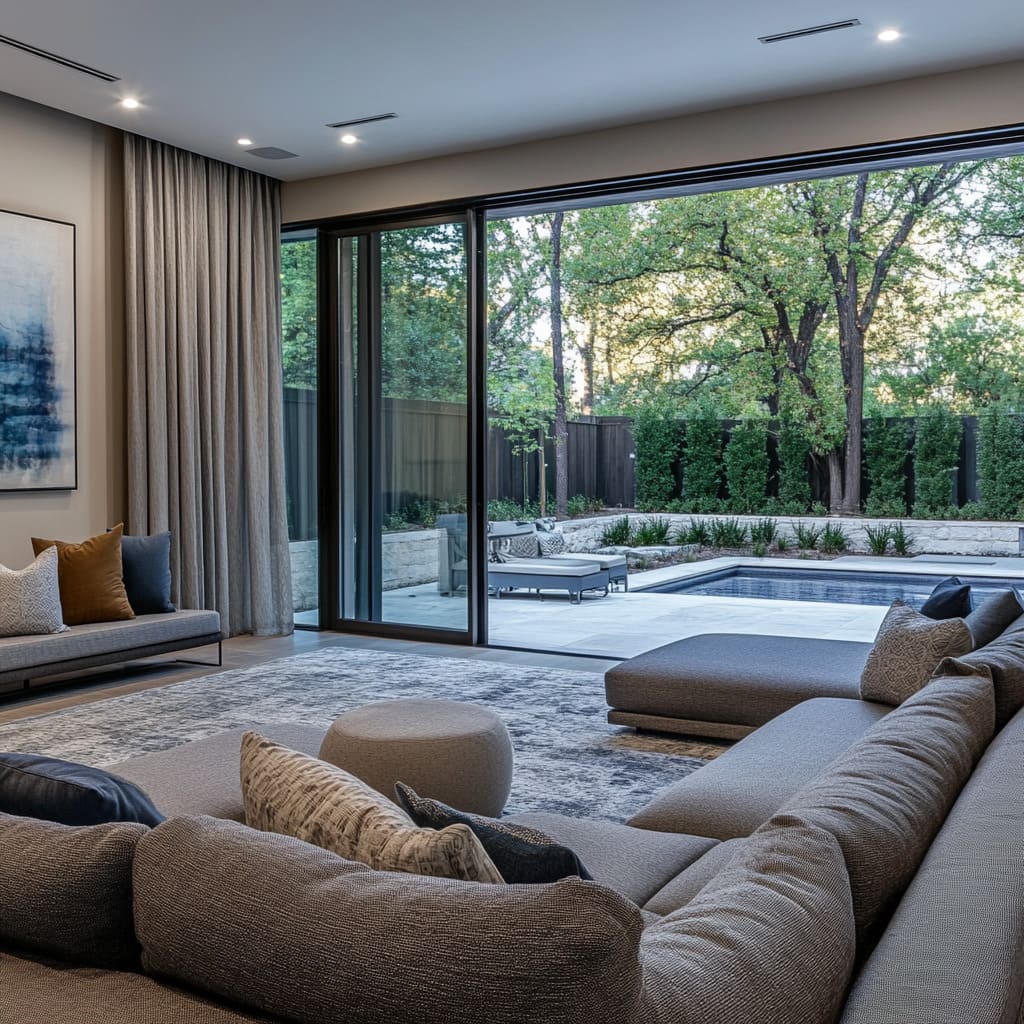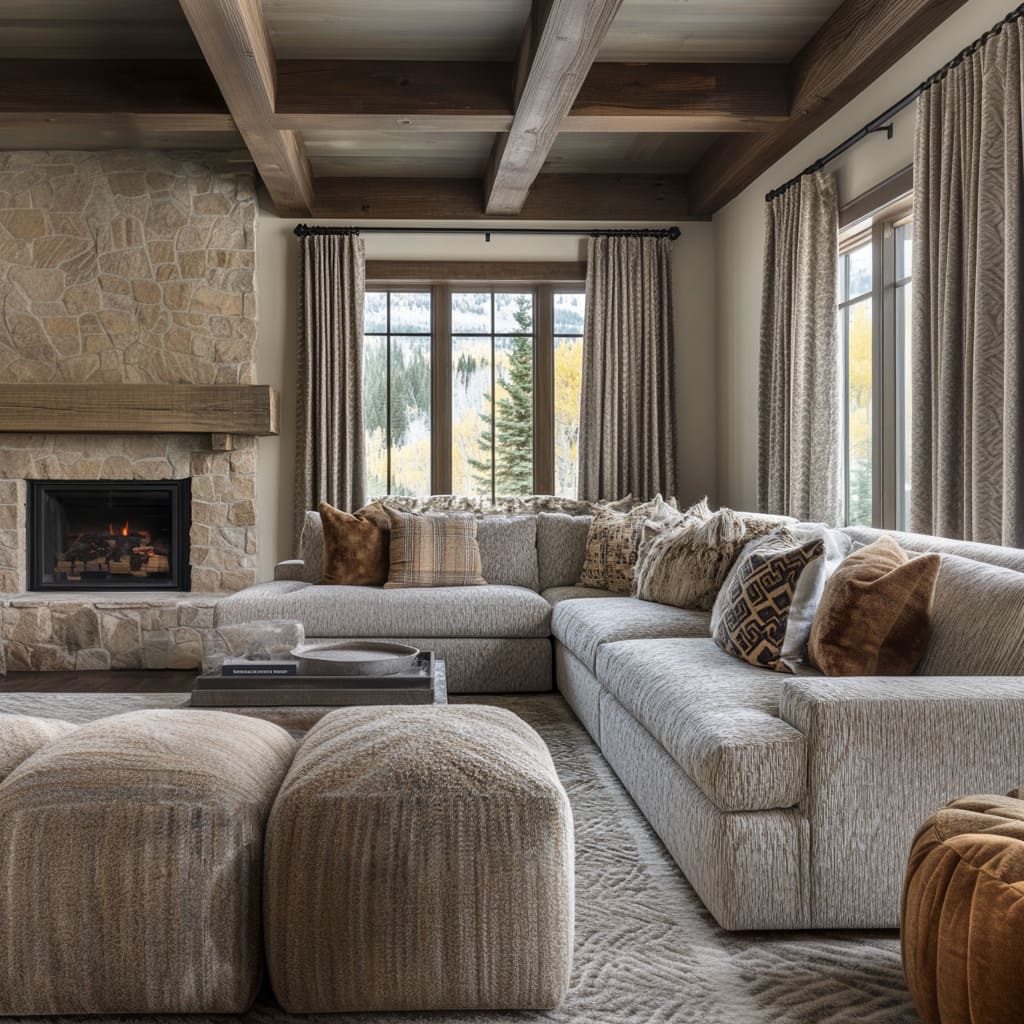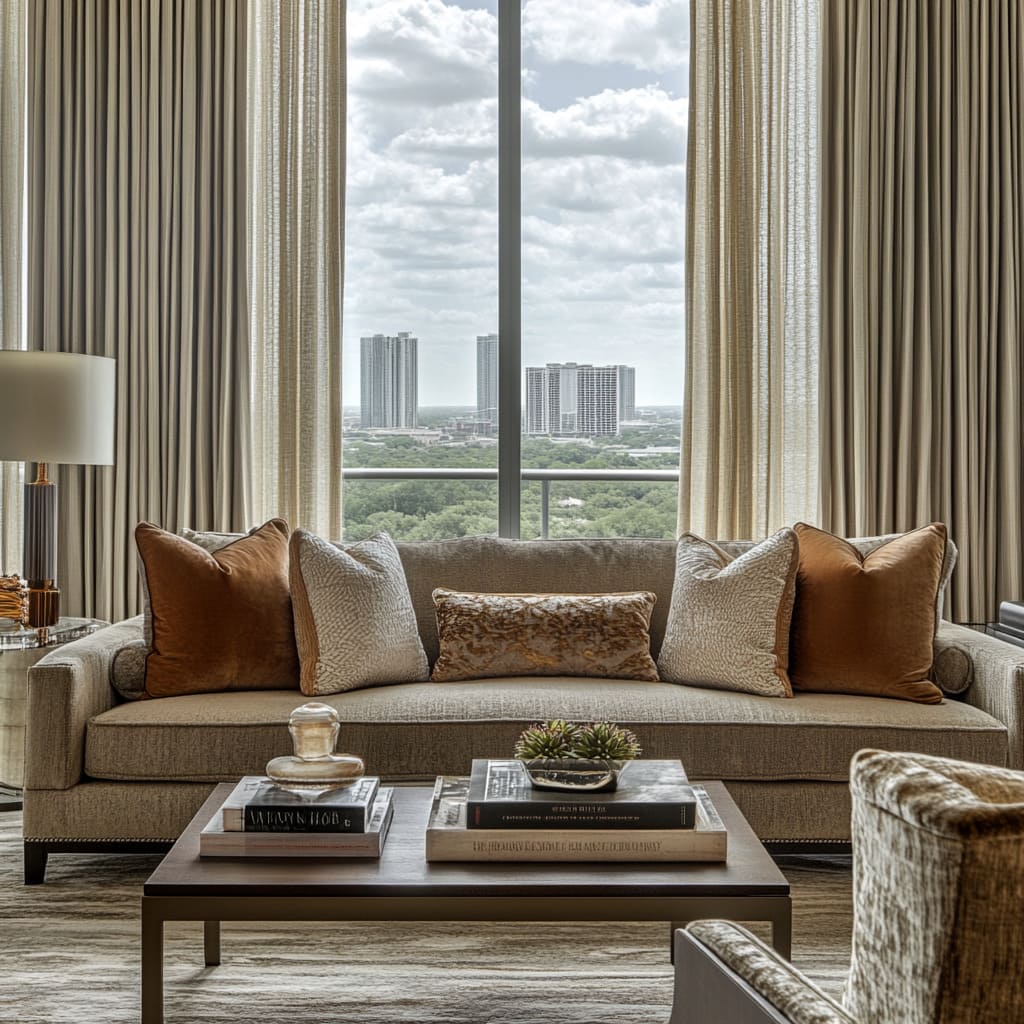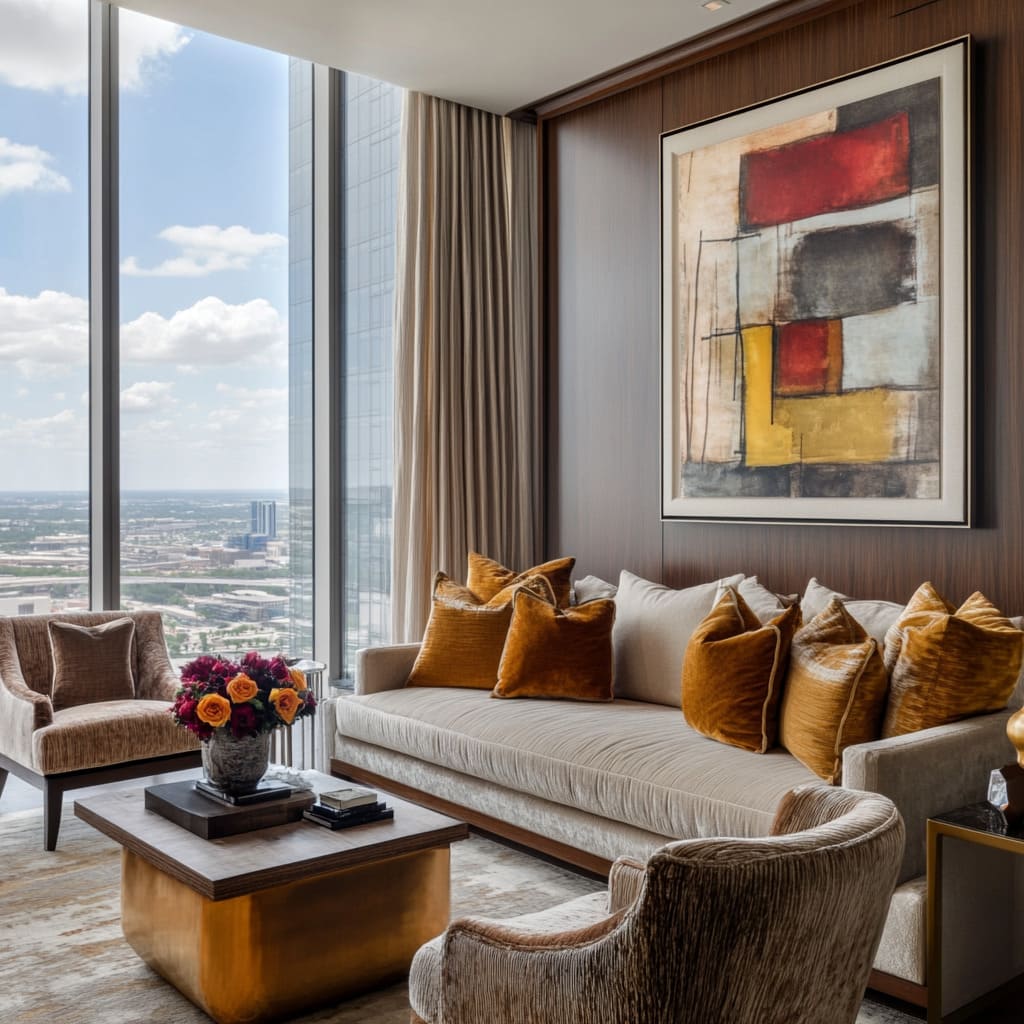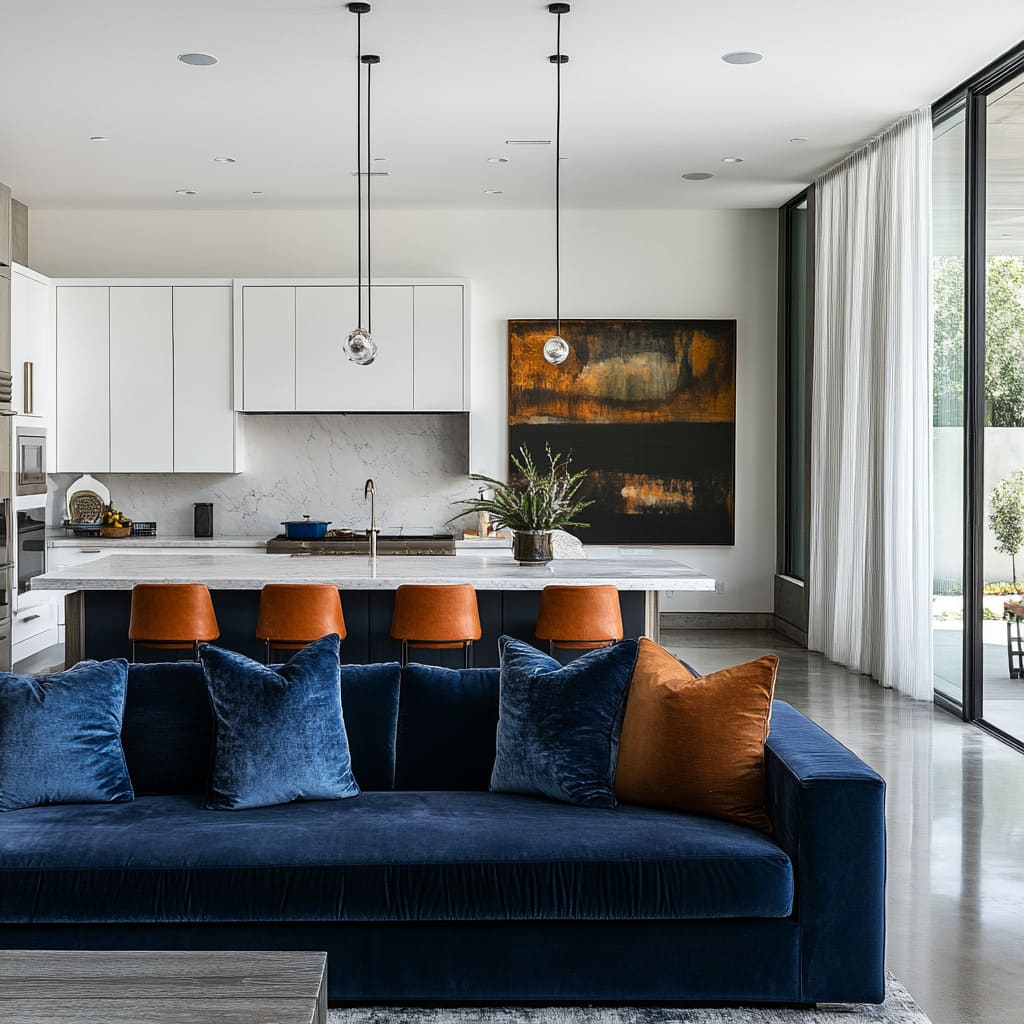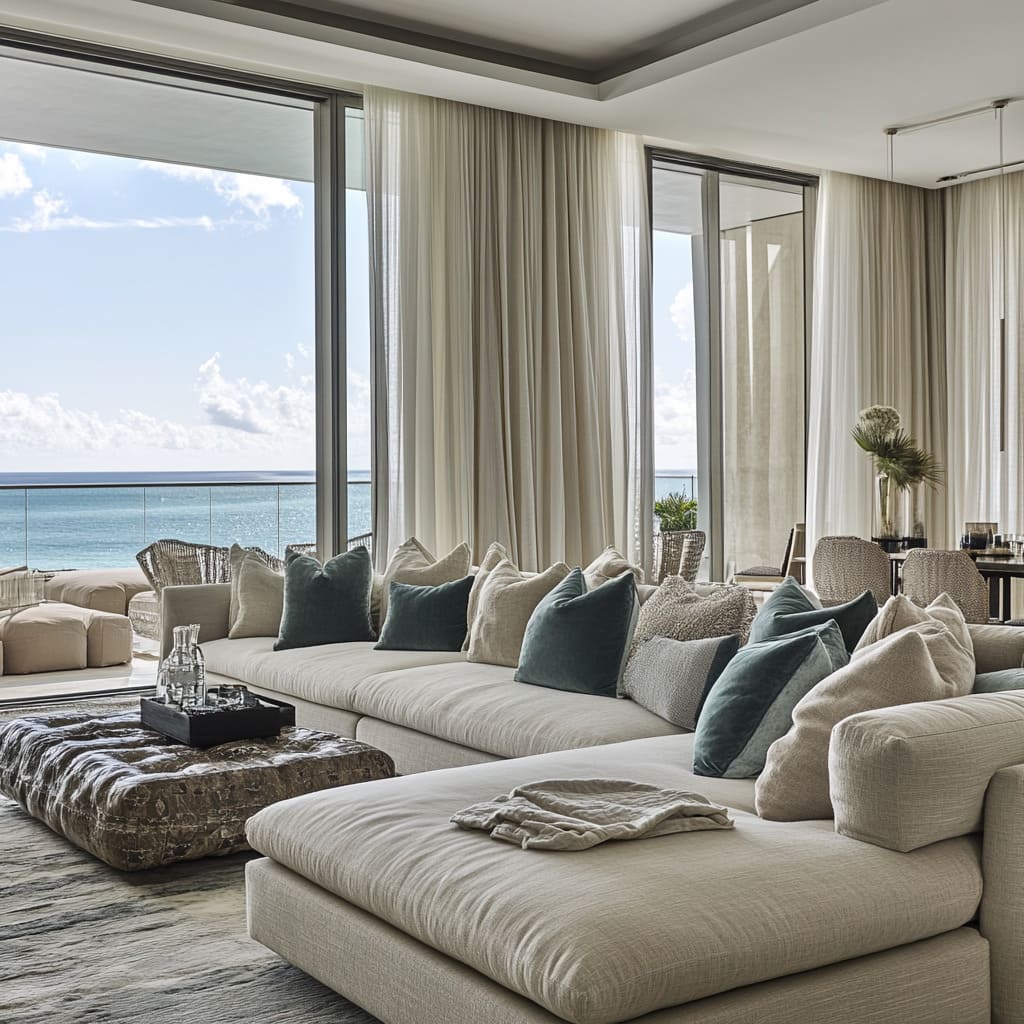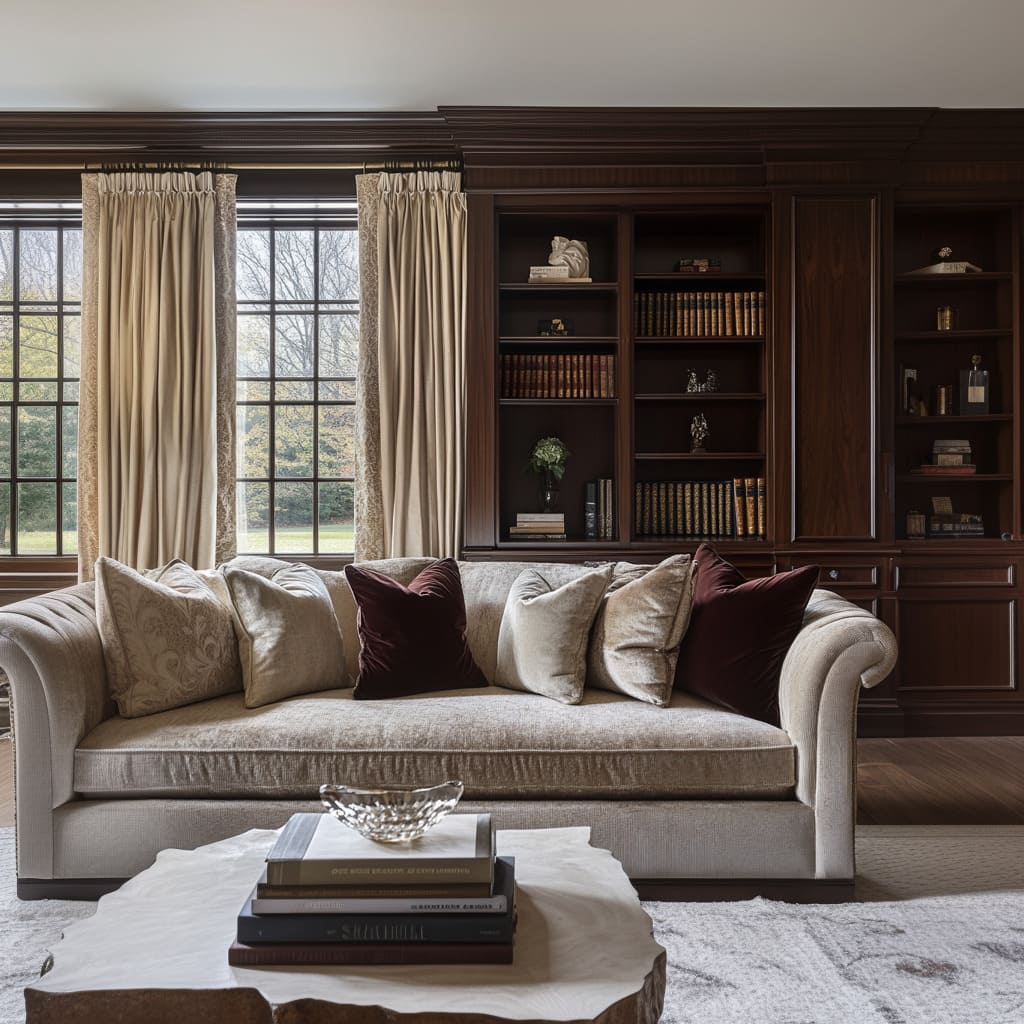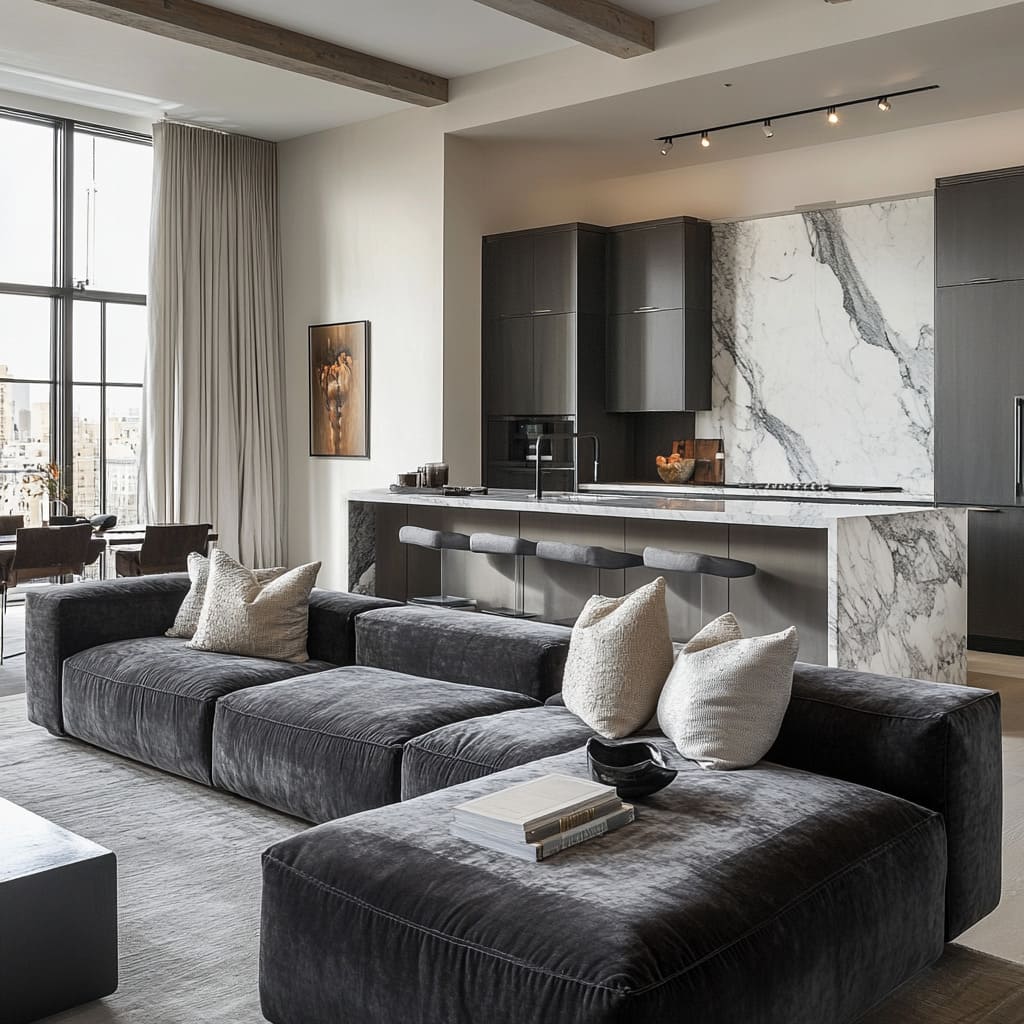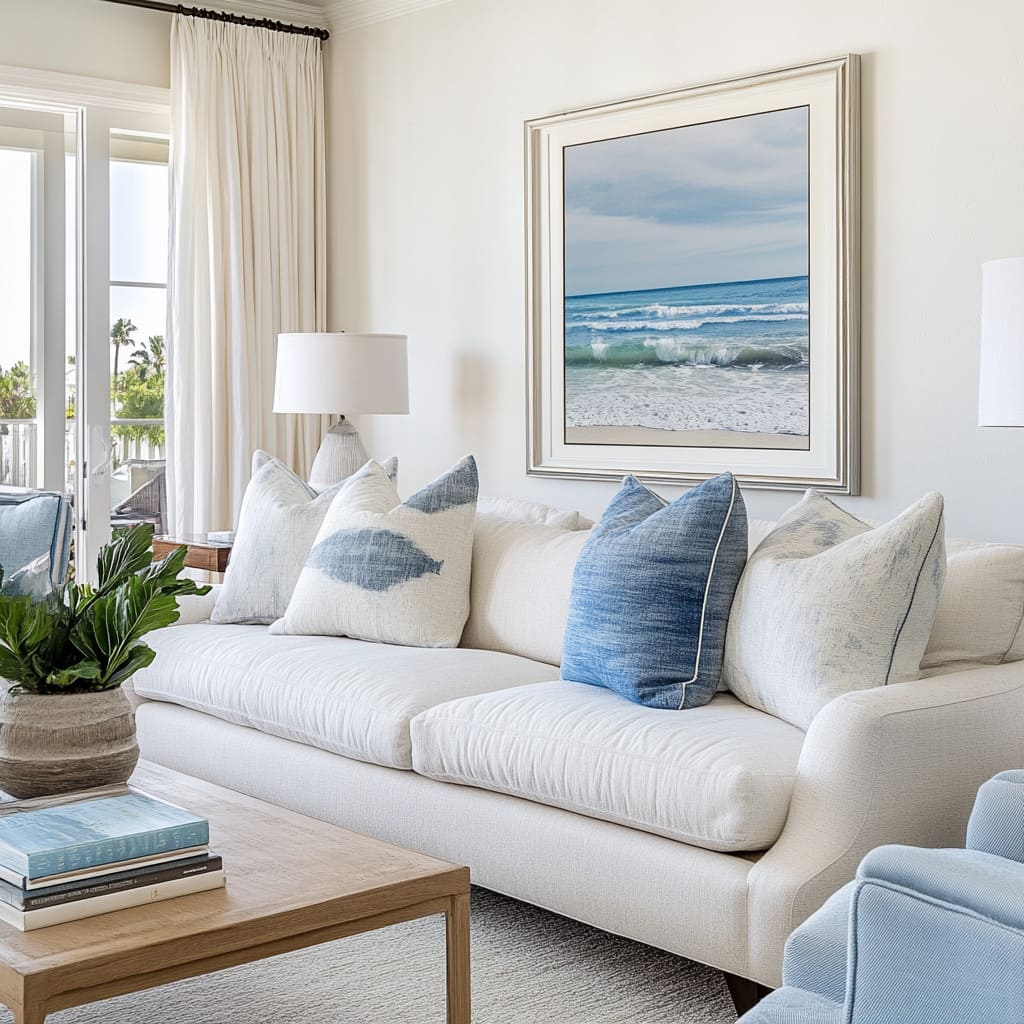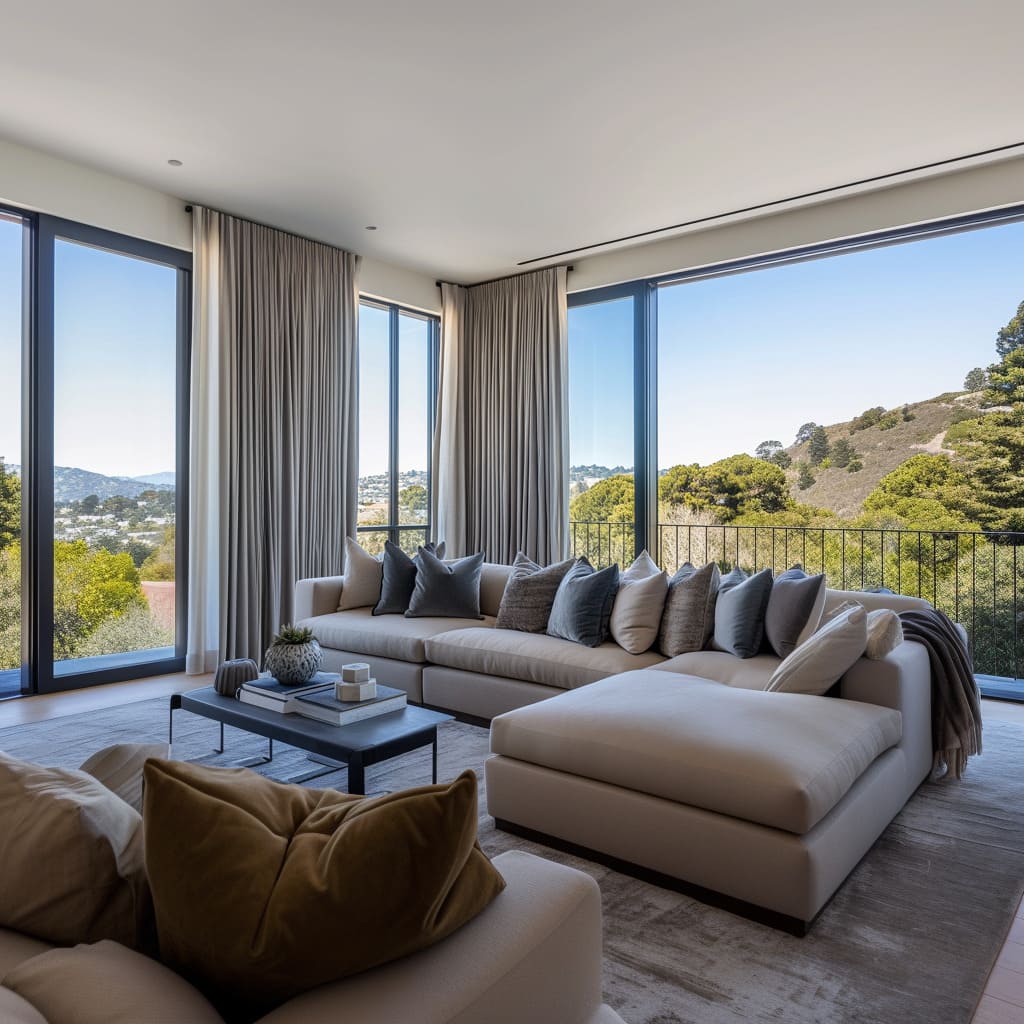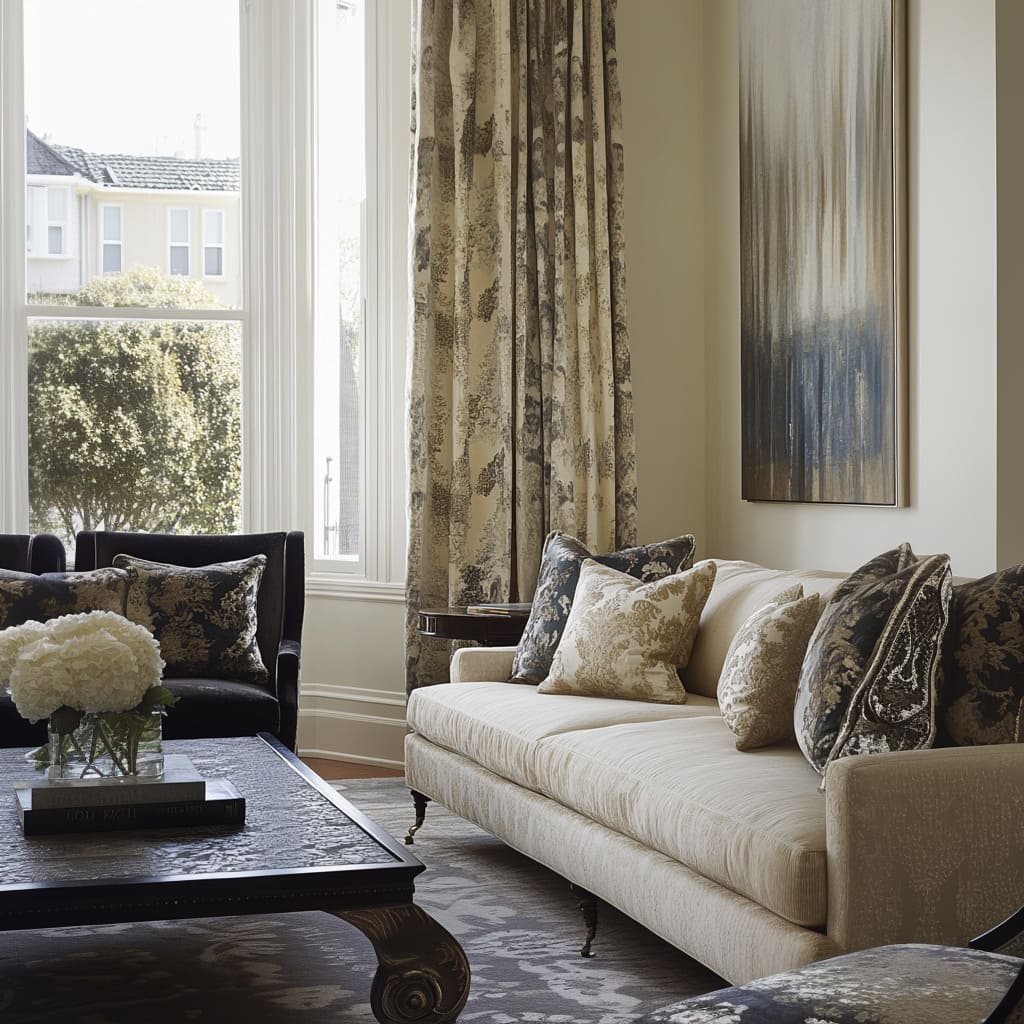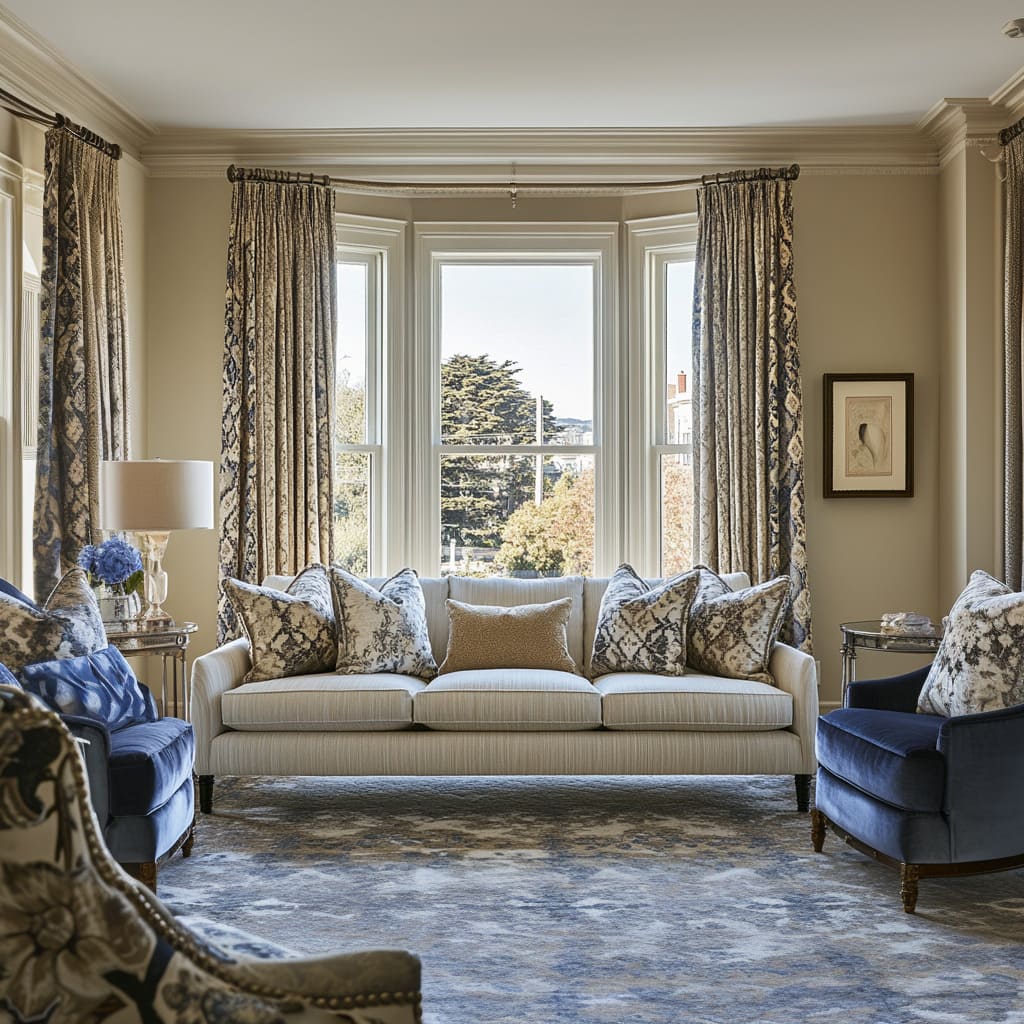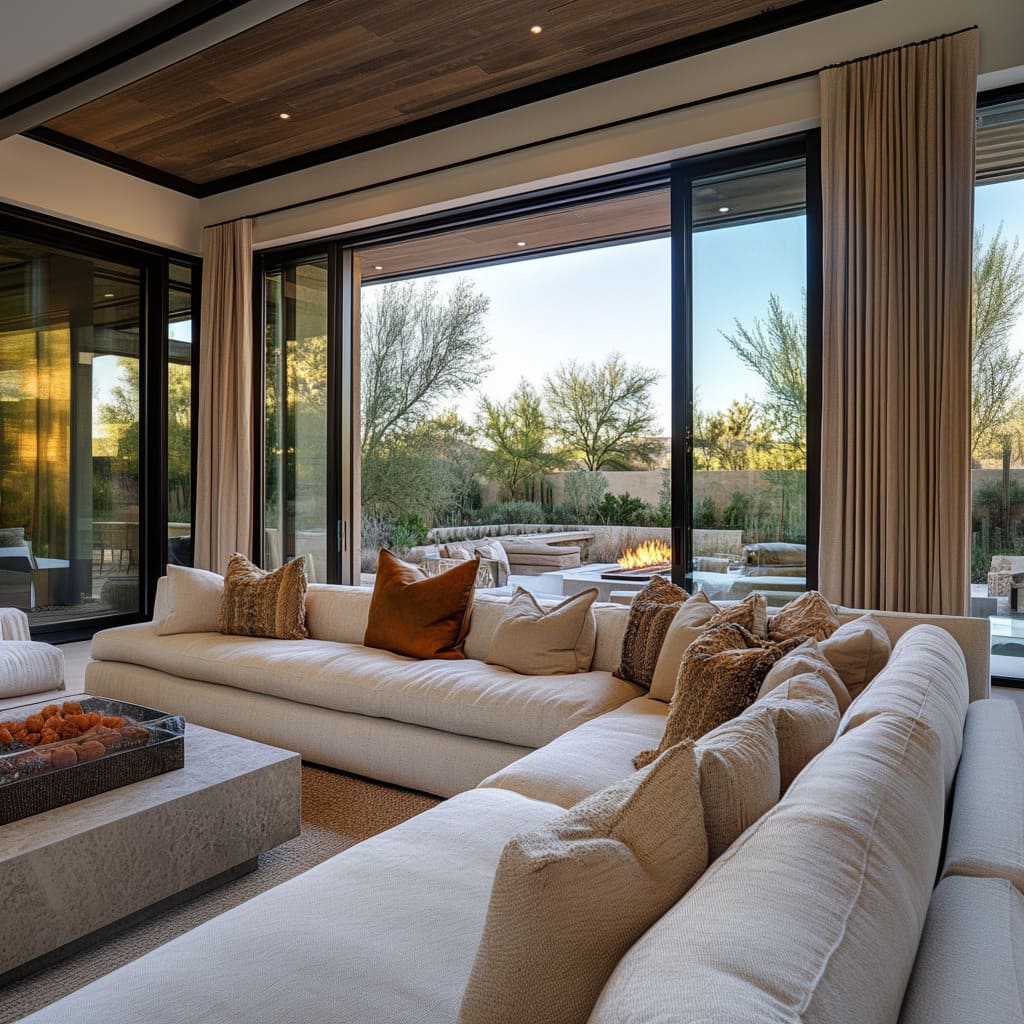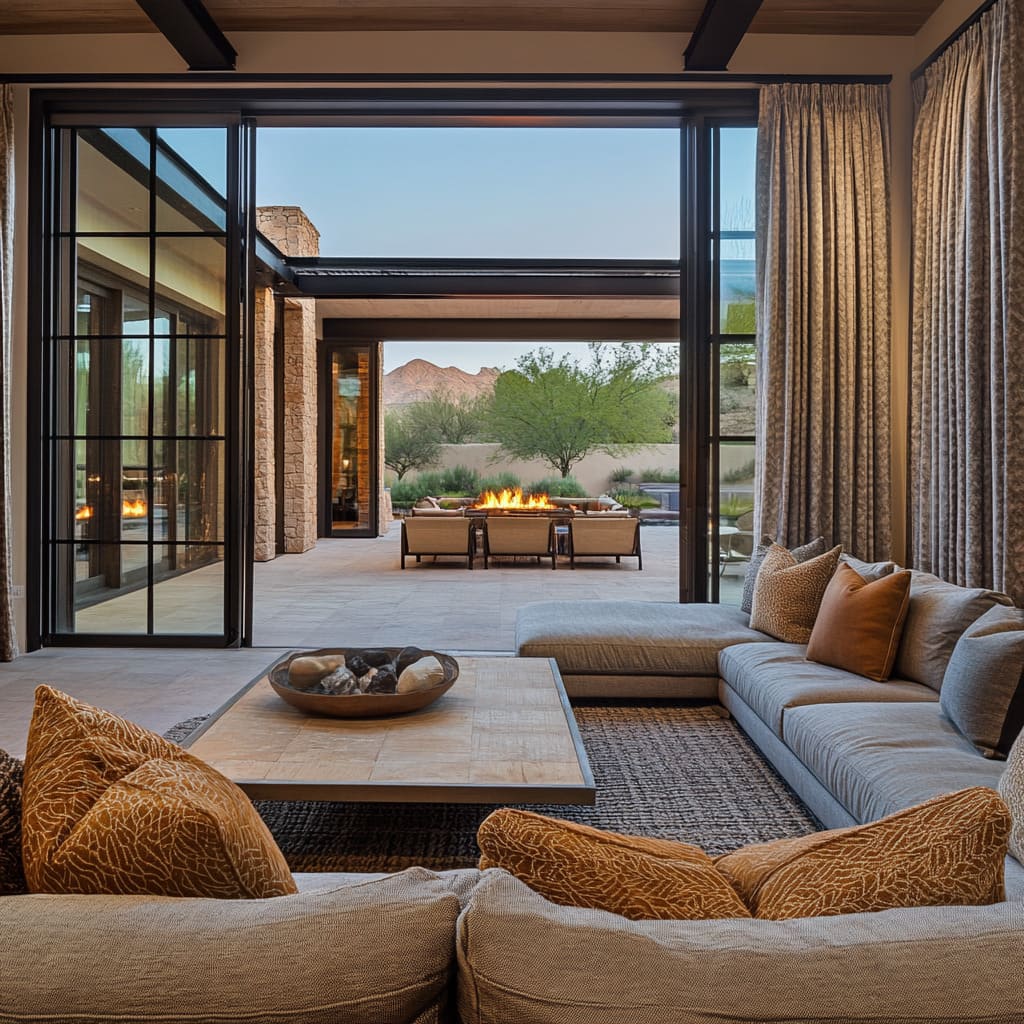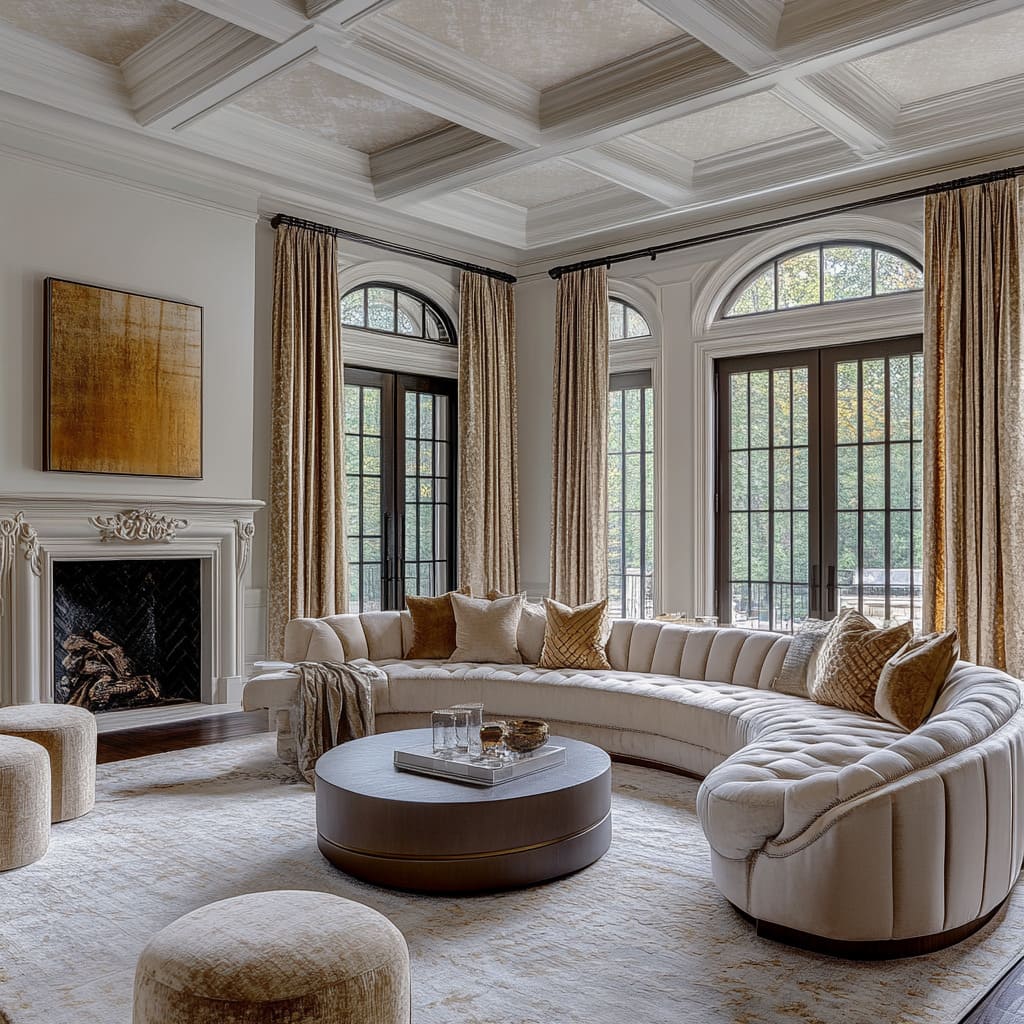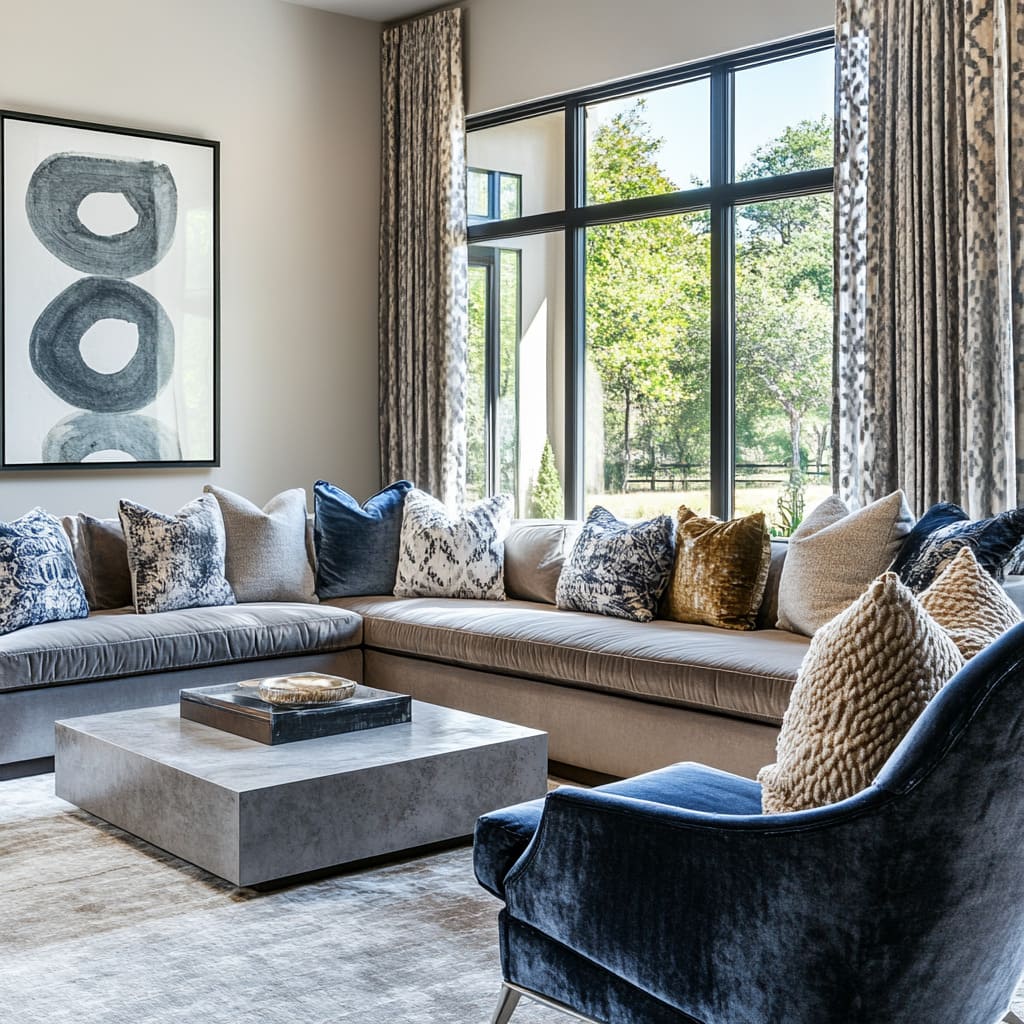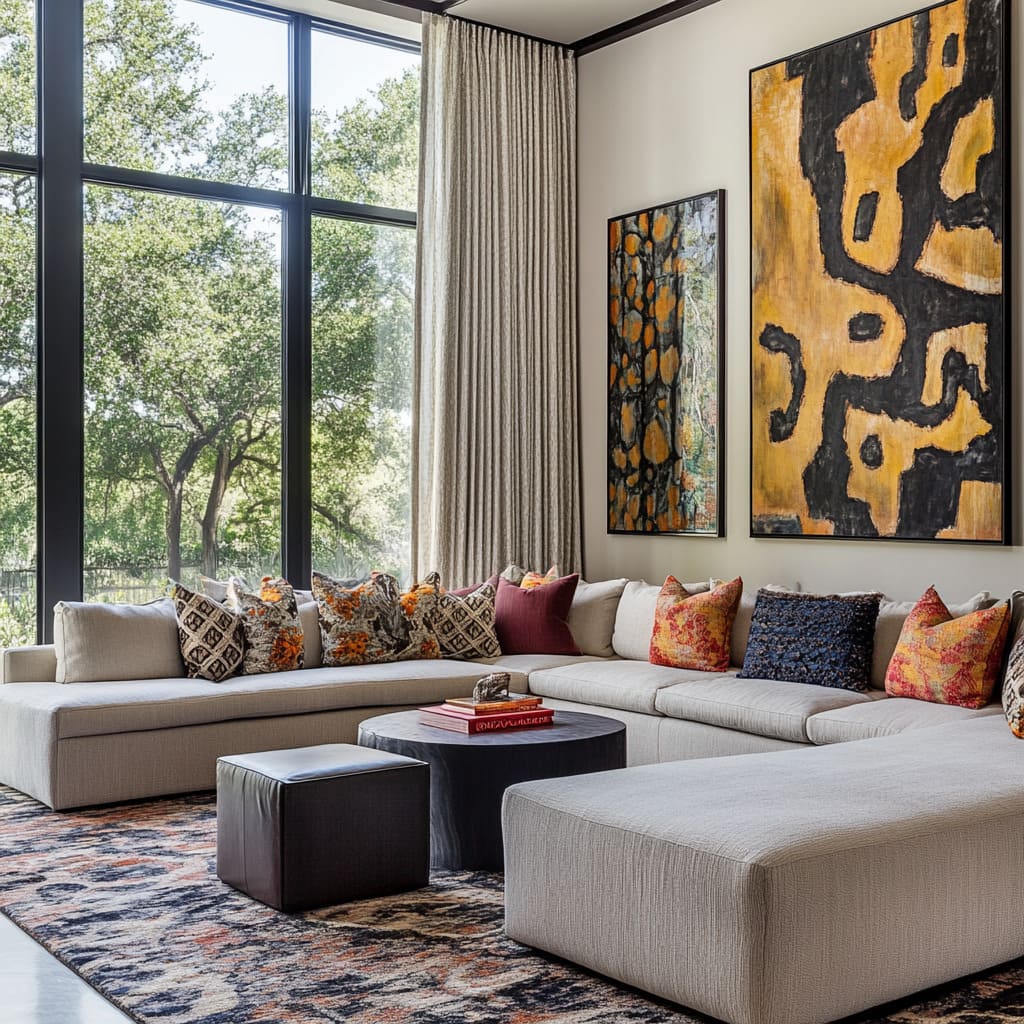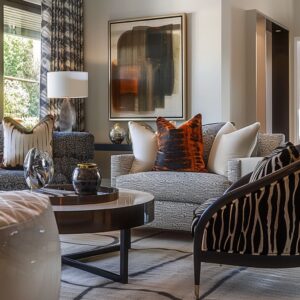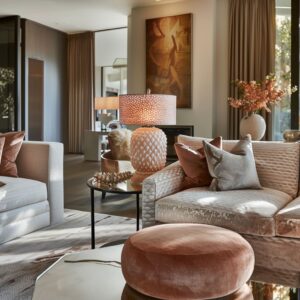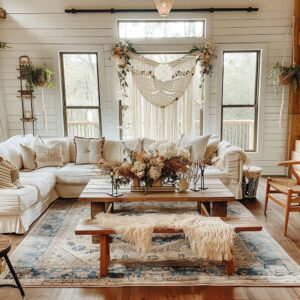In the world of contemporary living room design, the possibilities are as varied as they are inspiring. From the calming tones of coastal retreats to the sophisticated lines of urban interiors, contemporary living rooms offer a perfect blend of comfort, style, and functionality.
These spaces are designed to be both visually appealing and practical, meeting the demands of modern life while providing a haven of relaxation and beauty.
Contemporary living rooms are known for their versatility. They can be tailored to suit a wide range of tastes and preferences, whether you’re drawn to the minimalist elegance of a city apartment or the laid-back charm of a beachside home. The best living room ideas often combine clean lines, neutral color palettes, and a mix of natural and high-end materials to create spaces that are both welcoming and stylish.
In this article, we will explore some of the finest examples of contemporary living room designs, showcasing a range of styles that cater to different environments. Whether you’re looking for sitting room decor ideas that bring a touch of sophistication to a city loft, or lounge decor ideas that transform a coastal getaway into a chic retreat, this article will provide you with inspiration and practical tips.
We’ll start by examining the core principles that define contemporary living rooms, such as the emphasis on open spaces, the use of natural light, and the integration of modern technology. From there, we’ll take a closer look at coastal living rooms, where the focus is on creating a light, airy atmosphere with a natural color palette and materials like wood and stone.
We’ll also delve into the world of urban elegance, where luxurious fabrics, bold colors, and striking artwork come together to create spaces that are as dynamic as the cityscapes they overlook.
Finally, we’ll explore how contemporary living rooms can seamlessly blend elements of both traditional and modern design, resulting in spaces that are timeless yet fresh. Along the way, we’ll offer interior decoration ideas for drawing rooms that bridge these styles, helping you to create a living space that reflects your personal taste and lifestyle.
Through this exploration, you’ll gain insight into the key features and design principles that make contemporary living rooms so adaptable and appealing. Whether you’re planning a complete makeover or just looking to refresh your space, this article will provide you with the inspiration and guidance you need to bring your living room vision to life.
The Core Principles of Contemporary Living Room Design
Contemporary living room design is characterized by its clean lines, minimalist approach, and a strong focus on function and comfort. It’s a style that thrives on simplicity, avoiding unnecessary ornamentation while creating spaces that are both aesthetically pleasing and highly functional.
This design philosophy is rooted in the idea that less is often more, with every element in the room serving a purpose or contributing to the overall harmony of the space.
One of the defining features of contemporary design is its use of neutral color palettes. Neutral tones like whites, greys, and beiges form the foundation of many contemporary living rooms, providing a versatile backdrop that can be easily adapted with different textures and accent colors.
These living room paint colors ideas are popular because they create a sense of calm and spaciousness, allowing the room’s other elements to stand out without competing for attention.
The best color for living room walls in a contemporary space often leans towards these neutral shades, as they offer the flexibility to layer in bold or subtle accents through furniture, artwork, and decor. This understated approach to color allows the design to evolve with changing tastes and trends, making it easy to refresh the space with minimal effort.
Texture and material play a significant role in contemporary living room design, adding depth and interest to what might otherwise be a simple space. Incorporating different materials such as velvet, leather, stone, and wood can transform a room, making it feel rich and inviting.
Velvet cushions might be paired with a sleek leather sofa, or a stone coffee table could be contrasted with a warm wooden floor. These combinations create a tactile experience that enhances the room’s overall atmosphere.
The best wall texture design for living room spaces often includes subtle techniques like smooth plaster or textured wallpaper that add a sophisticated touch without overwhelming the room. These textures work harmoniously with the neutral palette, providing a layered look that’s both modern and timeless.
Open-concept layouts are another cornerstone of contemporary living room design. This trend emphasizes fluid, open spaces that connect the living room with adjacent areas like the kitchen or dining room.
Such layouts not only maximize the use of space but also encourage interaction and a sense of flow throughout the home. Lounge sitting room layout ideas often incorporate open-concept principles, allowing for a seamless transition between different functional areas while maintaining a cohesive design aesthetic.
When considering the ideal living room layout, it’s essential to think about how the space will be used and how it connects to the rest of the home. Lounge room layout ideas might include positioning furniture to create natural pathways or using rugs and lighting to define different zones within an open space.
The goal is to create a layout that feels intuitive and comfortable, with each piece of furniture serving a specific purpose while contributing to the overall design.
In summary, the core principles of contemporary living room design revolve around simplicity, functionality, and a thoughtful approach to color, texture, and layout. By focusing on these elements, it’s possible to create a living room that is not only beautiful but also practical and inviting—a space that reflects the essence of modern living.
Wondered What Your Budget Can Truly Achieve?
Enter Your Details and Explore Your Options!
[budget_renovation_calculator]
Coastal Retreats: The Art of Relaxed Luxury
In the world of interior design, coastal living rooms embody the perfect blend of relaxation and understated luxury. These spaces are crafted to evoke a sense of calm, making them ideal for homes near the water or for anyone seeking to bring the tranquility of the coast into their everyday life.
Contemporary coastal living rooms achieve this by focusing on light, natural materials, and a soft, neutral color palette that reflects the beauty of the seaside environment.
Serenity Through Design
Creating a coastal retreat within your home begins with an understanding of how design elements can work together to foster a peaceful atmosphere. This style leans heavily on natural light, organic materials, and a palette that mirrors the colors found in nature.
Coastal living room ideas often revolve around simplicity and comfort, using design to create a space where one can unwind and feel connected to the natural world.
Natural Light and Large Windows
One of the key features of a coastal living room is the abundance of natural light. Large windows are essential in this design approach, as they allow sunlight to flood the room, enhancing its airy and open feel.
These windows also serve the important function of bringing the outdoors in, making the coastal environment a part of the interior experience. Whether your view includes the ocean, a garden, or simply the sky, maximizing natural light creates a direct connection to the coastal surroundings.
In modern coastal living room designs, the use of large glass doors or floor-to-ceiling windows can further blur the lines between indoor and outdoor spaces. These design choices not only emphasize the importance of natural light but also invite the gentle breezes and sounds of the sea into the living space, enhancing the overall coastal experience.
Organic Materials
The use of organic materials is a defining characteristic of coastal interiors. Elements like jute, wood, and stone are chosen for their tactile qualities and natural origins, bringing a grounded and authentic feel to the space.
Jute rugs, for example, are a popular choice in coastal lounge room ideas due to their durability and texture, which add warmth without overpowering the room’s overall aesthetic.
Wooden furniture, whether it’s a weathered coffee table or a set of wicker chairs, introduces a sense of nature into the living room. These pieces often feature simple, clean lines that complement the minimalist approach typical of contemporary coastal designs.
Stone, whether used in a fireplace surround, flooring, or decorative accents, adds a touch of rugged beauty that echoes the raw elements of the coast. These materials work together to create a tactile environment that feels connected to the earth, enhancing the sense of relaxation and escape that a coastal living room should provide.
Neutral and Muted Color Schemes
Color plays a pivotal role in establishing the mood of a coastal living room. The palette typically centers around light, airy colors—whites, beiges, and soft blues—that evoke the tranquility of the ocean and sky.
These hues not only create a serene atmosphere but also reflect the natural light, making the room feel larger and more open.
The best coastal living room ideas often incorporate subtle variations within this color scheme, using different shades of the same color to add depth and interest. For instance, soft blue cushions on a white sofa, paired with a beige jute rug, can create a cohesive and calming look.
Muted tones are preferred over bold colors, as they contribute to the room’s overall sense of peace and relaxation.
These gentle colors also provide a versatile backdrop for other design elements, allowing the textures and materials to stand out without overwhelming the senses. By keeping the palette understated, the design remains flexible, ready to evolve with changing trends or seasonal decor updates.
Furniture and Decor
When it comes to furnishing a coastal living room, the balance between comfort and style is key. Plush sofas and armchairs invite relaxation, while natural wood tables and minimal yet impactful decor maintain the room’s elegant simplicity.
Furniture in a modern coastal living room often features clean lines and a slightly weathered finish, which adds character without detracting from the overall design.
Decorative elements should be chosen with care, keeping the space uncluttered and focused. Items such as woven baskets, simple ceramics, and coastal-themed artwork can add personality and charm without overwhelming the room.
The goal is to create a space that feels effortless and inviting, where every element contributes to the overall sense of relaxed luxury.
In conclusion, coastal living room design is all about creating a space that feels both luxurious and laid-back. By focusing on natural light, organic materials, neutral color schemes, and carefully selected furniture, you can transform your living room into a tranquil retreat that captures the essence of coastal living.
Whether your home is by the sea or in the heart of the city, these design principles can help you create a space that is both beautiful and serene.
Urban Elegance: Sophisticated Spaces in the City
Urban living rooms are the epitome of modern elegance, where sleek design meets luxurious details to create spaces that are both functional and stylish. In bustling city environments, the living room often serves as a sanctuary—a place to unwind and entertain in style.
These contemporary spaces are carefully crafted to balance aesthetics with practicality, making them some of the best living room design ideas for urban settings.
Modern Glamour Meets Functionality
In urban settings, living rooms are designed with a dual purpose in mind. They must accommodate the fast pace of city life while providing a chic retreat from it.
This balance is achieved through a careful selection of materials, colors, and furniture that reflect a sense of modern glamour while ensuring comfort and usability. The design of these spaces often includes multifunctional furniture, smart storage solutions, and open layouts that maximize space and provide flexibility.
Bold Color Choices and Statement Pieces
One of the defining features of urban elegance is the use of bold color choices and statement pieces. Deep, rich colors like navy, grey, and jewel tones are popular in these settings, as they add depth and sophistication to the space.
These hues are often paired with metallic accents—think gold, brass, or chrome—that introduce a touch of luxury without overwhelming the room. Statement furniture pieces, such as a velvet sofa or a striking coffee table, act as focal points that anchor the room and add a sense of drama and refinement.
When selecting the best sitting room decor for an urban setting, it’s essential to consider how these bold elements can be balanced with more understated pieces to create a cohesive look. The goal is to make a statement without sacrificing the room’s overall harmony.
Textures and Layers
Urban living rooms excel in the art of layering textures and materials to create a rich, inviting environment. The combination of different textures—such as velvet cushions, leather furniture, and polished stone surfaces—adds visual interest and tactile appeal to the space.
Velvet and leather, in particular, are favored for their luxurious feel and ability to introduce warmth and comfort. Meanwhile, polished stone surfaces, whether in the form of a marble coffee table or a sleek mantelpiece, offer a cool contrast that enhances the room’s sophistication.
These layered textures not only contribute to the room’s aesthetic but also make it more dynamic, encouraging guests to explore and experience the space in different ways. This thoughtful approach to layering is one of the key aspects of lounge room interior design ideas in contemporary urban settings.
Artwork and Decor
Art and decor play a crucial role in bringing personality and style to an urban living room. Abstract art, with its bold forms and expressive colors, is often chosen to complement the modern vibe of the space.
These pieces add an element of intrigue and can serve as conversation starters, while also tying together the room’s color scheme.
Decorative items are carefully curated, with an emphasis on quality over quantity. Each piece—whether it’s a sculptural object, a designer lamp, or a collection of art books—contributes to the room’s overall aesthetic without cluttering it.
The result is a space that feels personalized and well-considered, reflecting the tastes and lifestyle of the homeowner.
Maximizing Space
In urban environments, where space can be at a premium, maximizing the available area is key to achieving both comfort and style. Open-concept layouts are popular as they create a sense of flow and openness, allowing for seamless transitions between different areas of the home.
This approach is particularly effective in apartments or smaller homes where space needs to be utilized efficiently.
The best lounge ideas often include smart storage solutions, such as built-in shelves or hidden compartments, which keep the room looking tidy and uncluttered. Multifunctional furniture, like ottomans that double as storage or extendable coffee tables, are also essential in these spaces, providing flexibility without compromising on style.
These design strategies ensure that even the smallest urban living rooms can feel spacious and welcoming, offering the perfect blend of practicality and elegance.
Transitional Spaces: Blending Classic and Modern Elements
Harmonizing Tradition with Contemporary
Transitional living rooms offer a unique blend of classic and modern design elements, creating spaces that are both timeless and current. This style is perfect for those who appreciate the elegance of traditional design but want to incorporate the clean lines and simplicity of contemporary aesthetics.
By harmonizing these two approaches, transitional spaces achieve a balanced look that feels fresh yet familiar.
Mixing Materials and Styles
A hallmark of transitional design is the skillful mixing of materials and styles. Traditional furniture pieces, such as a Chesterfield sofa or a wingback chair, might be paired with modern textiles like linen or silk, creating a juxtaposition that feels both elegant and approachable.
Similarly, classic wood furniture can be complemented with modern metal accents or glass surfaces, adding a contemporary edge to the room. This blend of old and new creates a layered and nuanced space, where each piece of furniture or decor contributes to the room’s overall aesthetic.
Lounge room interior design ideas in transitional spaces often include a mix of textures, patterns, and finishes that create a sense of depth and interest.
Sophisticated Neutrals
The color palette in transitional living rooms typically consists of sophisticated neutrals that provide a versatile backdrop for the room’s mix of styles. Warm and cool tones are often used together, allowing for a flexible and elegant look that can be easily adapted to changing tastes.
For example, a neutral grey or beige sofa might be accented with pillows in soft blues or greens, adding a touch of color while maintaining the room’s serene atmosphere. These neutrals not only unify the room’s design but also enhance the sense of tranquility and comfort, making the space feel both inviting and refined.
Texture and Pattern Play
In transitional spaces, texture and pattern play a significant role in adding character and depth. A classic rug with a subtle pattern might be paired with modern art or a sleek, contemporary coffee table, creating a dynamic contrast that brings the room to life.
Mixing textures—such as a smooth leather chair with a plush velvet throw—adds layers of interest and makes the space feel more inviting. These thoughtful combinations create a space that feels rich and multifaceted, offering something new to discover with each glance.
Furniture and Layout
The furniture in transitional living rooms is carefully selected to bridge the gap between classic comfort and modern simplicity. Clean lines and neutral tones are often favored, with an emphasis on functionality and comfort.
Pieces are chosen for their ability to complement each other, creating a cohesive look that is both stylish and comfortable.
The ideal layout in a transitional living room is one that promotes easy movement and conversation, with furniture arranged to encourage interaction and relaxation. By focusing on comfort and practicality, these spaces achieve a balance that is both aesthetically pleasing and welcoming.
The best lounge ideas for transitional spaces often include versatile furniture arrangements that can adapt to different needs, making the room as functional as it is beautiful.
Connecting Indoors with Outdoors
In contemporary living room design, the trend of connecting indoor spaces with the natural environment outside has gained significant traction. This approach not only enhances the sense of space but also creates a tranquil and inviting atmosphere that feels closely tied to nature.
By bringing elements of the outdoors inside, living rooms can become more open, airy, and harmoniously connected with their surroundings, making them some of the best living rooms for modern living.
Bringing Nature Inside
Integrating outdoor elements into interior spaces is about more than just aesthetics; it’s about creating a seamless flow that blurs the boundaries between the inside and outside. This design philosophy emphasizes openness and connection, using natural materials, large windows, and strategic layouts to ensure that the living room feels like an extension of the natural world.
It’s a trend that speaks to a growing desire for homes that offer a peaceful retreat from urban life, without losing the comfort and style of modern interiors.
Large Windows and Sliding Doors
One of the most effective ways to connect indoor and outdoor spaces is through the use of large, floor-to-ceiling windows and sliding doors. These architectural features allow natural light to flood the room, creating a bright and welcoming environment.
More importantly, they provide unobstructed views of gardens, patios, or landscapes, making the outdoor scenery a part of the interior decor.
Sliding doors are particularly valuable in this context, as they can be opened wide to create a fluid transition between the living room and the outdoor area. This not only expands the living space but also enhances the overall experience of the room, making it feel larger and more versatile.
Whether your home opens onto a lush garden or a sleek urban patio, these features are essential for achieving a cohesive indoor-outdoor living experience.
Natural Materials and Greenery
To further blur the lines between indoors and outdoors, incorporating natural materials and greenery into the living room design is key. Wood, stone, and other organic materials bring a tactile, grounded feel to the space, echoing the textures found in nature.
For instance, a wooden coffee table or a stone fireplace can introduce natural warmth and visual interest to the room, tying it back to the outdoor environment.
Greenery is another essential element in this design approach. The use of indoor plants not only enhances the visual connection to nature but also improves air quality and adds a vibrant, living component to the room.
Whether it’s a collection of potted plants arranged on a shelf or a statement tree in a corner, greenery softens the lines of the interior and brings a sense of life and growth into the home.
These natural elements are complemented by interior design ideas for sitting rooms that prioritize simplicity and elegance, allowing the materials and plants to take center stage without overwhelming the space.
Neutral Tones and Organic Shapes
Color and form play a significant role in creating a seamless transition between the indoor and outdoor environments. Neutral tones, such as soft beiges, warm browns, and muted greens, mimic the colors of nature and help to create a cohesive look that ties the interior to the exterior.
These modern living room paint colors are chosen not only for their aesthetic appeal but also for their ability to create a calm and inviting atmosphere.
Organic shapes, whether in furniture design or decor, further enhance this connection. Curved lines and asymmetrical forms reflect the natural shapes found in the outdoors, adding a sense of fluidity and movement to the space.
A round coffee table, for example, or a sofa with gentle, flowing lines can soften the edges of the room and create a more inviting environment. By combining these elements—neutral tones, organic shapes, natural materials, and greenery—designers can create living rooms that feel like a natural extension of the outdoor world, offering a retreat that is both luxurious and deeply connected to nature.
Incorporating outdoor elements into living room design is about creating a space that feels open, connected, and at peace with its surroundings. Through the use of large windows, natural materials, and thoughtful color and shape choices, homeowners can achieve a living room that not only looks beautiful but also enhances the quality of life by fostering a closer connection to nature.
This approach to design is particularly effective in creating some of the best lounge room layouts, where comfort and style meet the tranquility of the natural world.
The Role of Art and Decor
Art and decor play a pivotal role in shaping the personality and character of contemporary living rooms. These elements are not just finishing touches; they are integral to creating spaces that reflect the tastes, interests, and lifestyles of the homeowners.
By carefully selecting and arranging art and decor, a living room can be transformed from a functional space into a true reflection of its occupants’ identity.
Personalizing the Space
Every living room tells a story, and art and decor are the storytellers. Whether through bold abstract paintings, cherished family heirlooms, or carefully chosen decorative items, these elements bring life and personality into the room.
They turn a generic space into one that feels uniquely yours, offering insights into your tastes, passions, and experiences. In contemporary design, the challenge lies in balancing these personal touches with the room’s overall aesthetic, ensuring that they enhance rather than overpower the space.
Statement Art Pieces
In many contemporary living rooms, statement art pieces serve as focal points that define the room’s character. These bold, often large-scale works draw the eye and set the tone for the rest of the decor.
Whether it’s a vibrant abstract painting, a striking photograph, or a modern sculpture, statement pieces anchor the room and provide a starting point around which other elements can be arranged.
The impact of such art goes beyond mere decoration; it becomes an integral part of the room’s identity. A well-chosen piece can evoke emotion, spark conversation, and even influence the color scheme and furniture choices in the space.
When considering lounge room decor ideas, integrating a statement art piece can transform the room, making it feel cohesive and intentional.
Curated Decor
Decorative items in a living room should be carefully curated to complement the overall design without overwhelming it. This might include vases, sculptures, books, or even small, personal mementos that add warmth and character to the space.
The key is to select items that not only fit the room’s aesthetic but also hold personal significance or bring joy to the homeowner.
For instance, a collection of art books displayed on a coffee table, or a set of vintage vases arranged on a mantel, can add layers of interest and personality to the room. These items should feel like a natural extension of the space, contributing to its overall ambiance without creating clutter.
The best living room decor strikes a balance between personal expression and design harmony, allowing each piece to shine without competing for attention.
Balance and Symmetry
Achieving balance and symmetry in a living room is essential to creating a harmonious and visually pleasing environment. This involves the strategic placement of decor items and artwork to ensure that the room feels balanced and cohesive.
For example, a large painting might be centered above a sofa, with matching side tables and lamps on either side to create a sense of symmetry.
Symmetry doesn’t have to be rigid; it’s more about creating a visual flow that feels natural and well-composed. This can be done by balancing larger items with smaller ones, or by mirroring elements on either side of the room to create a sense of equilibrium.
When thinking about wall decor for a drawing room, it’s important to consider how each piece contributes to the overall layout, ensuring that it enhances the space rather than creating visual dissonance.
In terms of decorating a sitting room, ideas that focus on symmetry and balance can make even the most eclectic collections of art and decor feel intentional and cohesive. It’s about finding the right mix of pieces that complement each other and the room as a whole, creating a space that feels complete and harmonious.
Art and decor are the elements that give a living room its soul. They bring personality, warmth, and a sense of identity to the space, turning it from a functional area into a true expression of the homeowner’s style and preferences.
By carefully selecting statement art pieces, curating decor, and achieving balance and symmetry, you can create a living room that is not only beautiful but also deeply personal. These elements work together to ensure that your living room is more than just a place to sit; it’s a space where your individuality shines through.
Conclusion
The world of contemporary living room design is vast and varied, offering a range of styles that can be adapted to suit any taste or environment. Whether you are drawn to the relaxed luxury of coastal retreats, the sleek sophistication of urban spaces, or the balanced harmony of transitional styles, contemporary design provides a flexible framework that can be personalized to reflect your own preferences and lifestyle.
Throughout this article, we’ve explored the key themes that define contemporary living room design. We’ve seen how clean lines and minimalist aesthetics create a sense of space and order, while the thoughtful use of textures and materials adds depth and interest.
We’ve also delved into the role of color, where neutral palettes offer a timeless foundation that can be easily updated with accents and decor.
One of the main strengths of contemporary design is its adaptability. This approach allows you to draw inspiration from different styles, whether you’re incorporating natural elements to create a connection with the outdoors or using bold art and decor to express your personality.
The versatility of contemporary design means that it can be tailored to meet your specific needs, whether you’re looking for the best interior for living room spaces in a city apartment or creating a calming retreat by the sea.
For those looking to apply these principles to their own homes, the key is to start with a clear vision of what you want your living space to feel like. Consider the role of natural light, the flow between different areas, and how furniture and decor can be arranged to create a comfortable and functional layout.
The best furniture arrangement for living room spaces often emphasizes open, airy layouts that promote easy movement and interaction, making the room both inviting and practical.
When it comes to decor, balance and harmony are crucial. By carefully selecting and placing art and accessories, you can create a space that feels complete and well-composed.
Lounge interior decor ideas that focus on simplicity and coherence can help tie the room together, ensuring that every element contributes to the overall look and feel.
Don’t forget the importance of wall decor, which can be a powerful tool in setting the tone for the room. Whether you opt for large statement pieces or a gallery of smaller works, lounge room wall decor should be chosen to complement the furniture and overall design, adding layers of interest without overwhelming the space.
Ultimately, the top decorating ideas for living room spaces are those that reflect your own style and make you feel at home. By drawing on the principles discussed in this article, you can create a living room that is not only beautiful but also perfectly suited to your way of living.
Contemporary design offers the flexibility to explore different influences and create a space that is uniquely yours—one that balances comfort, function, and style in a way that feels effortlessly cohesive.


